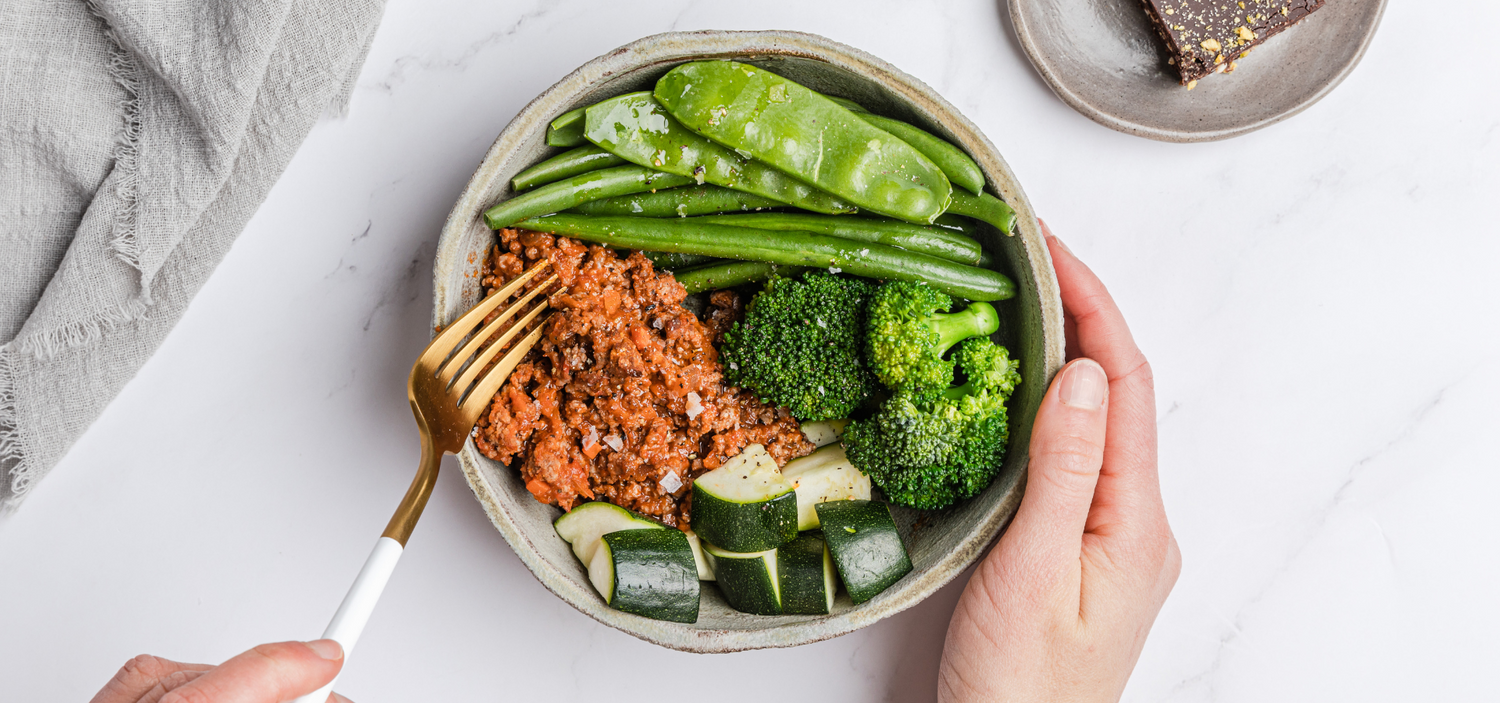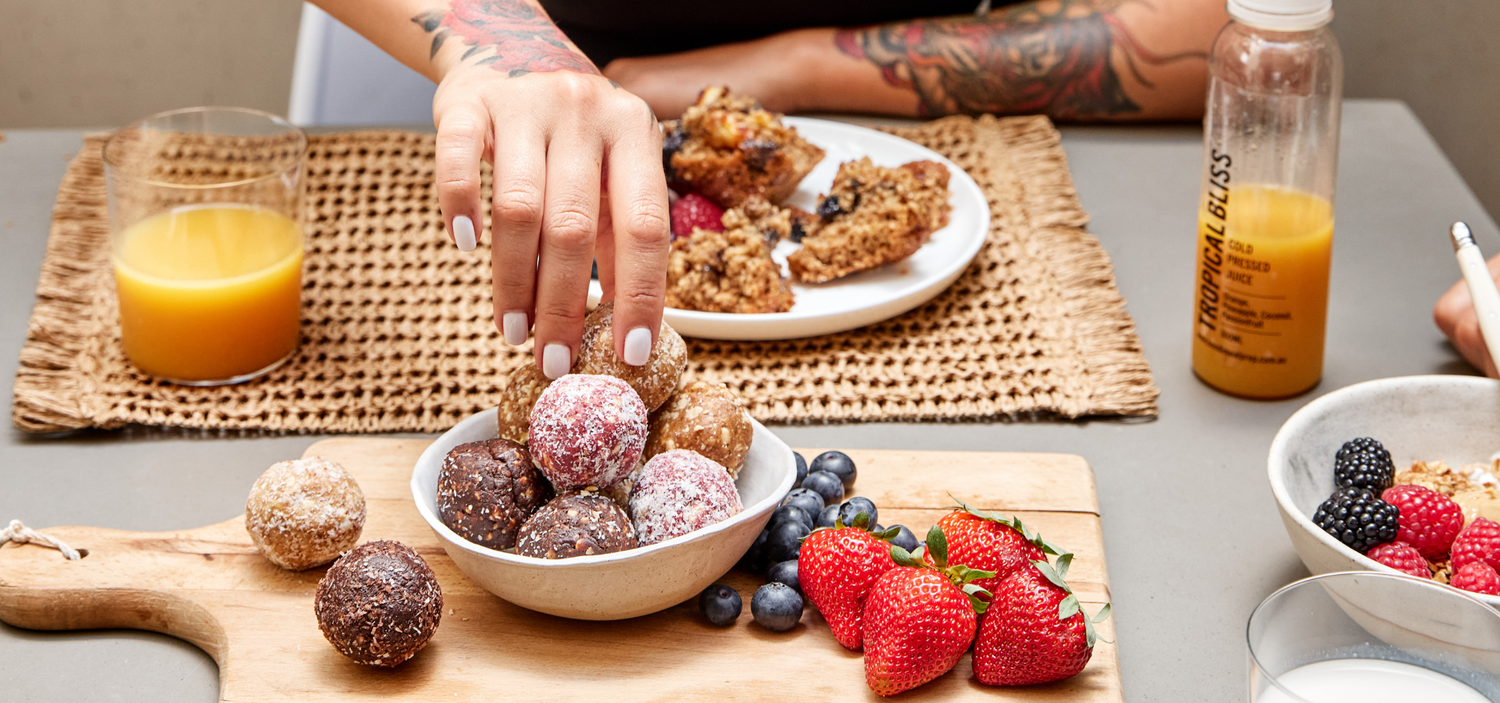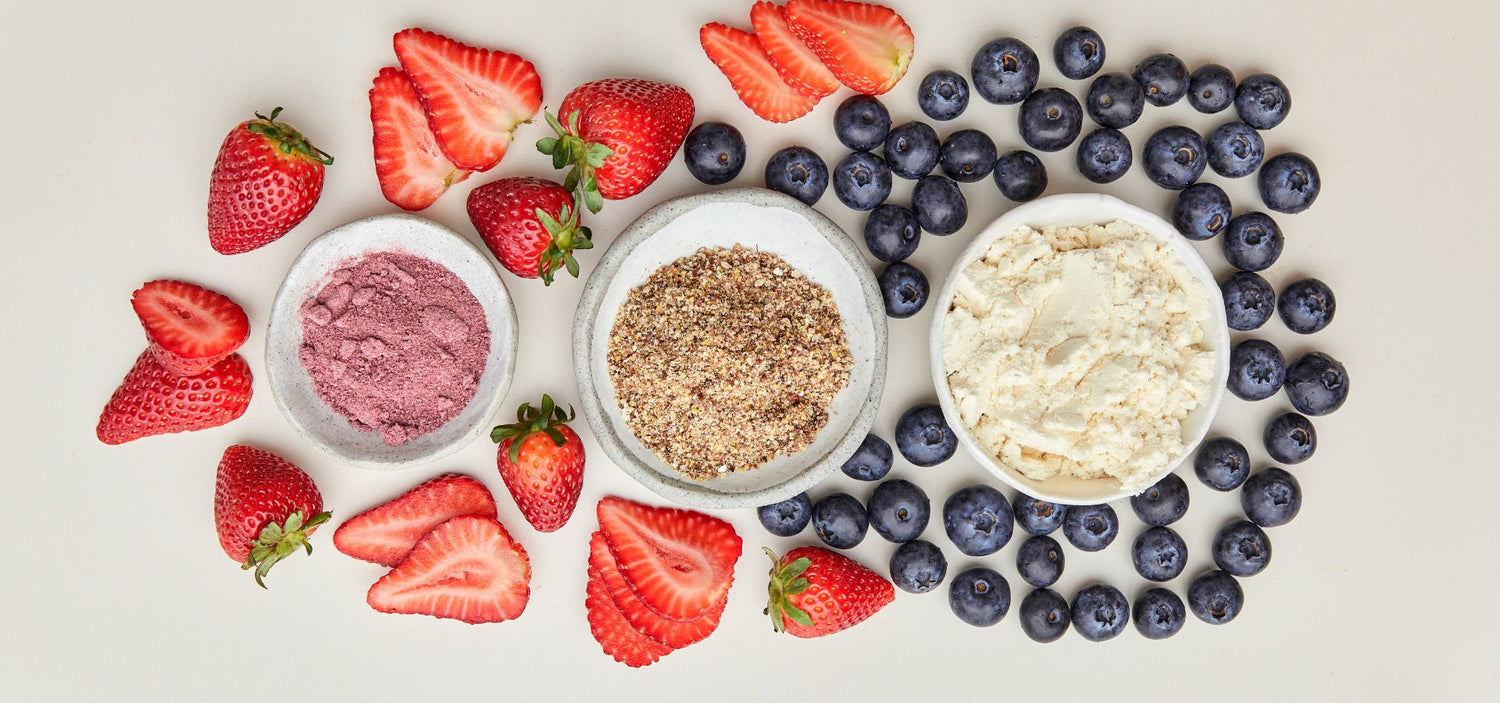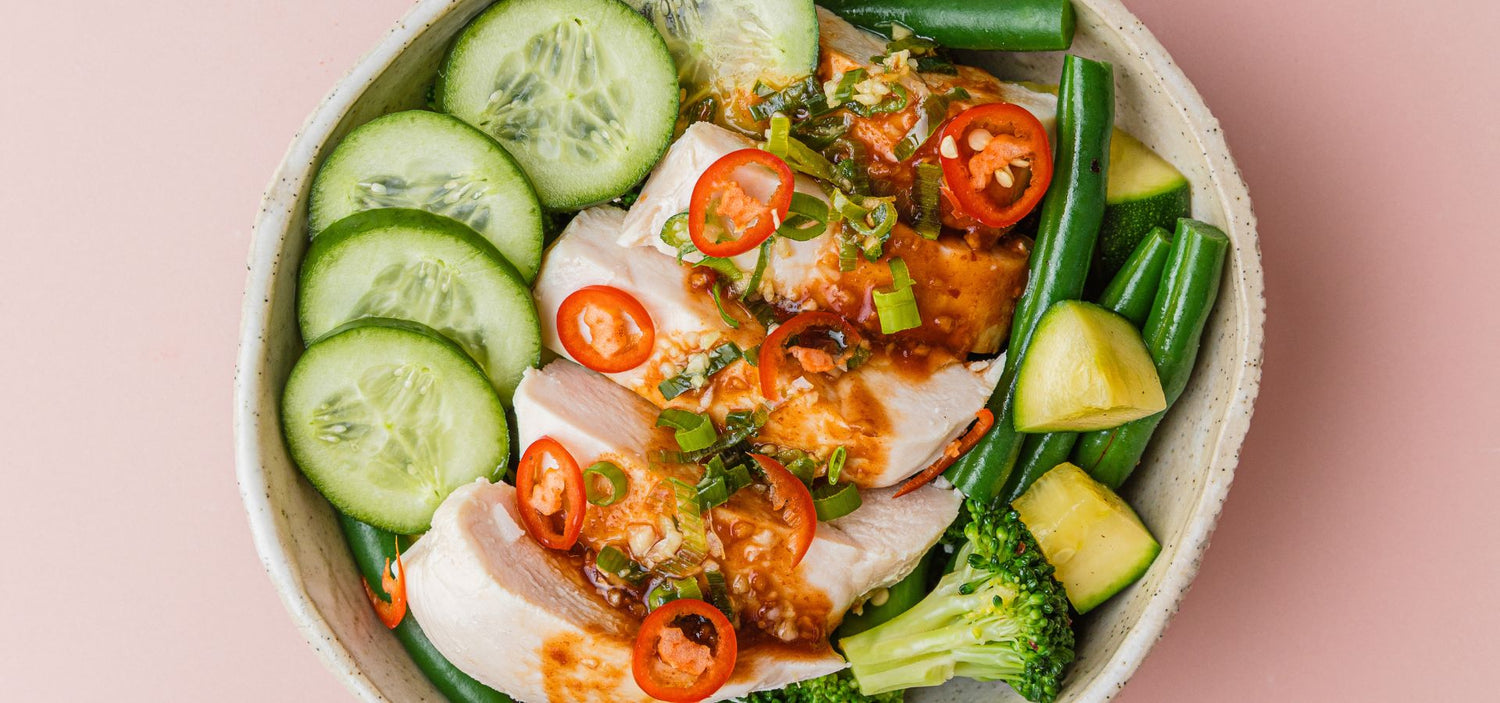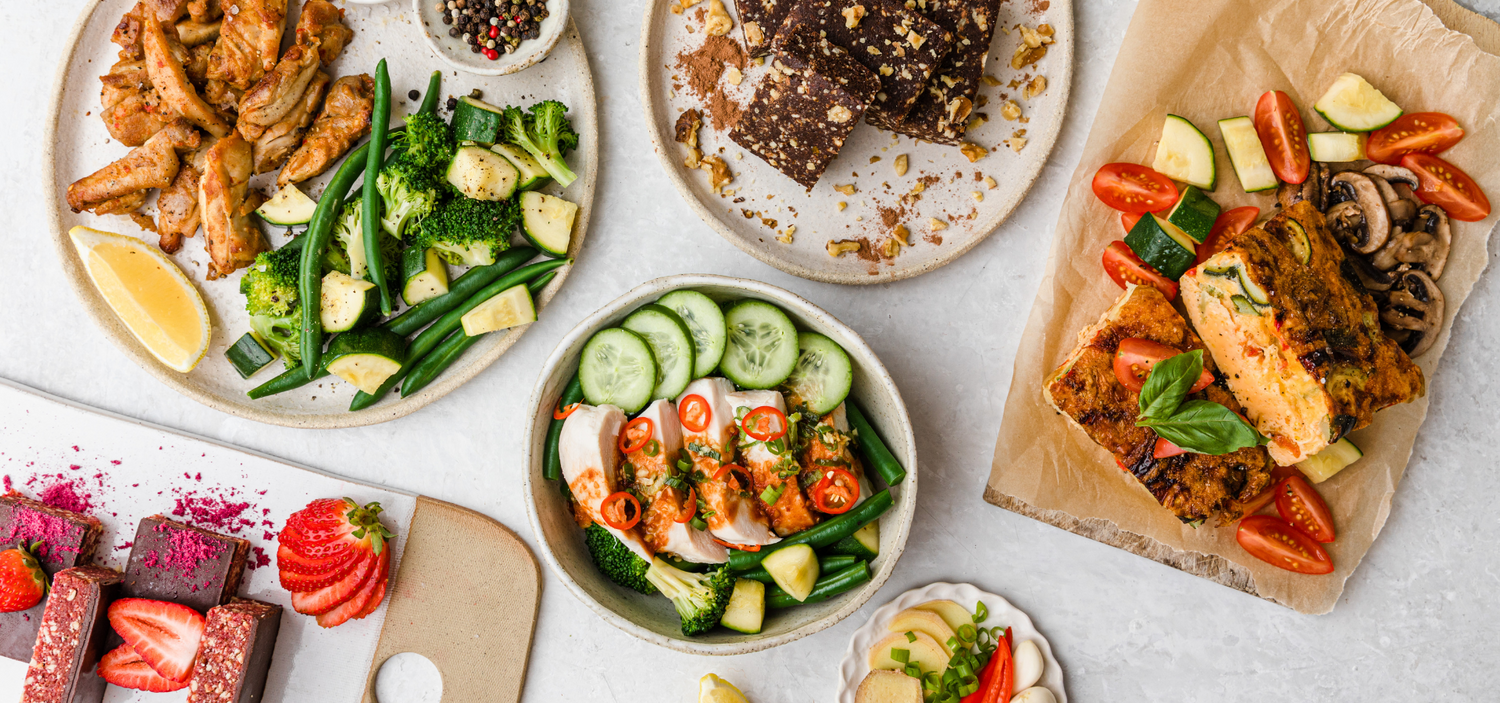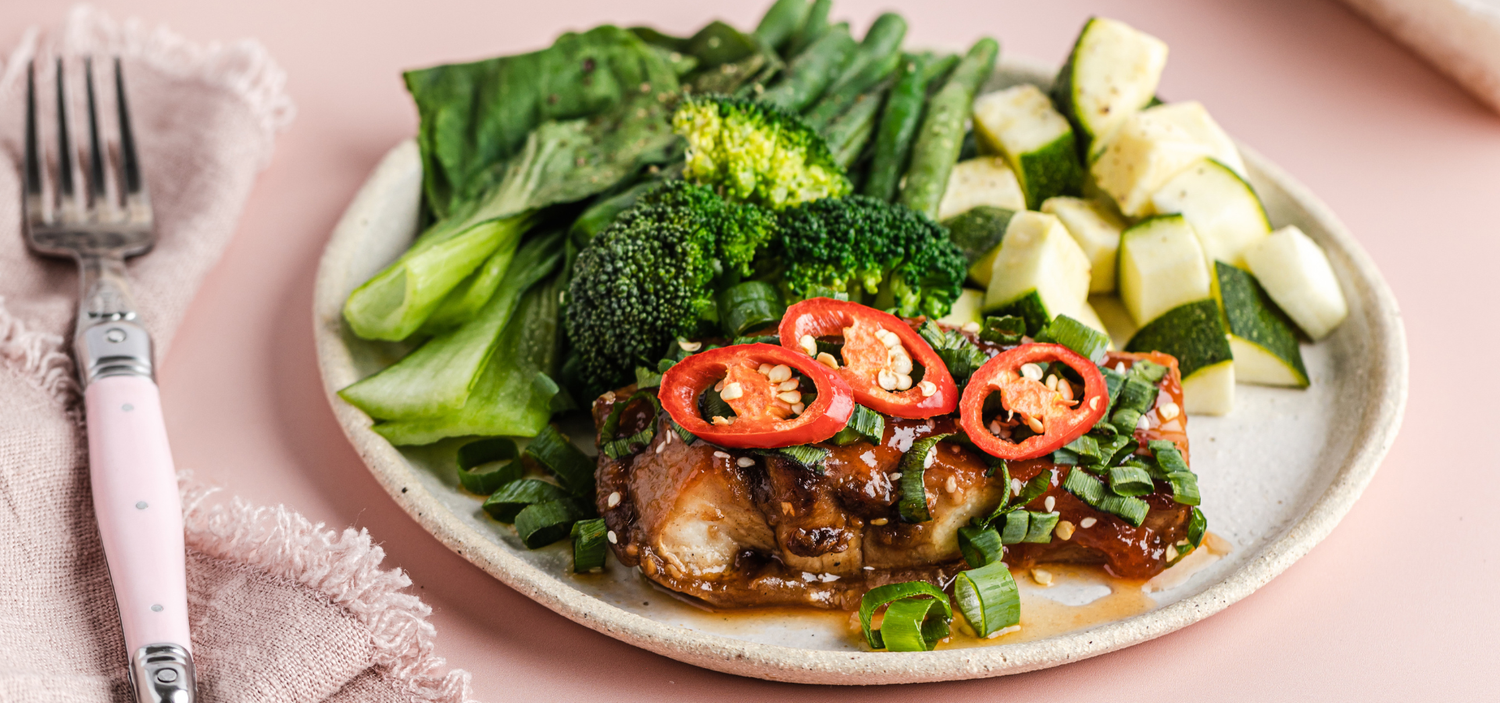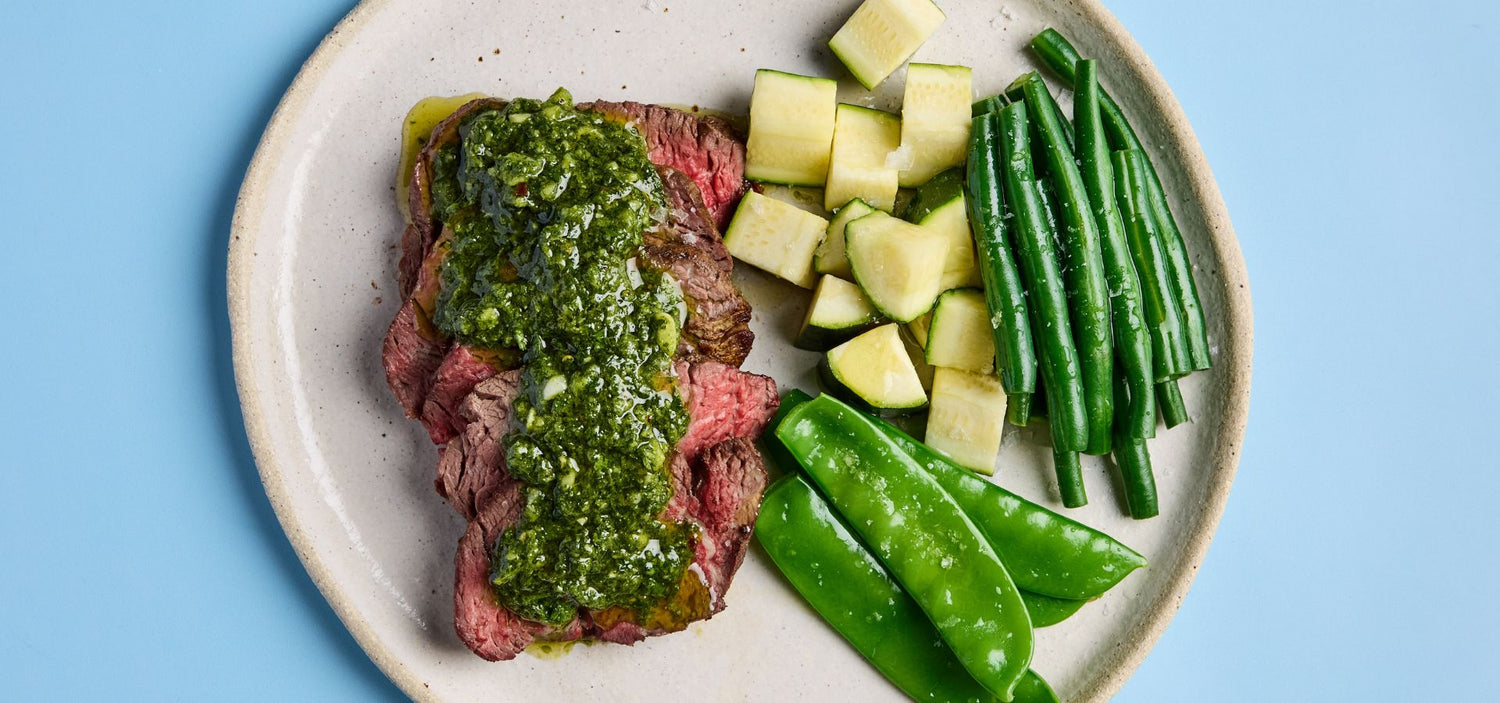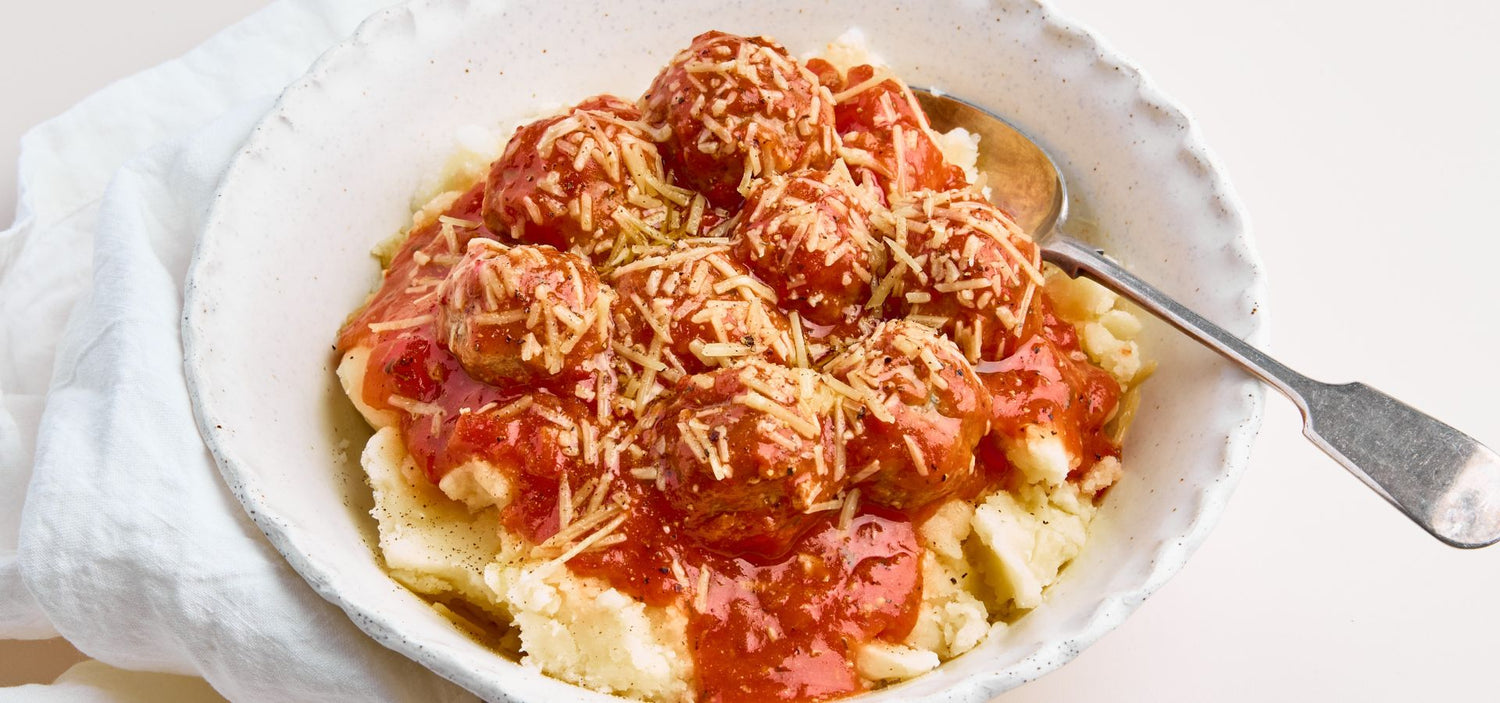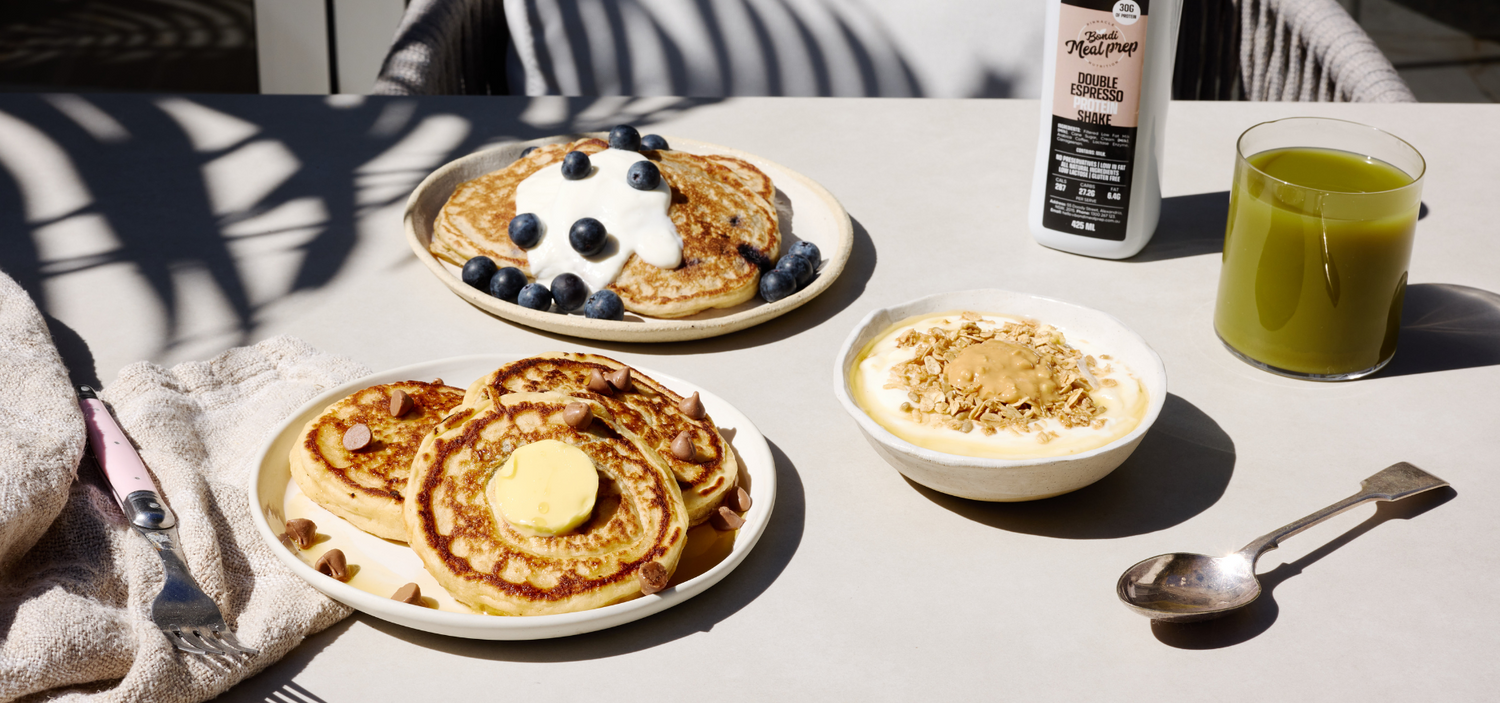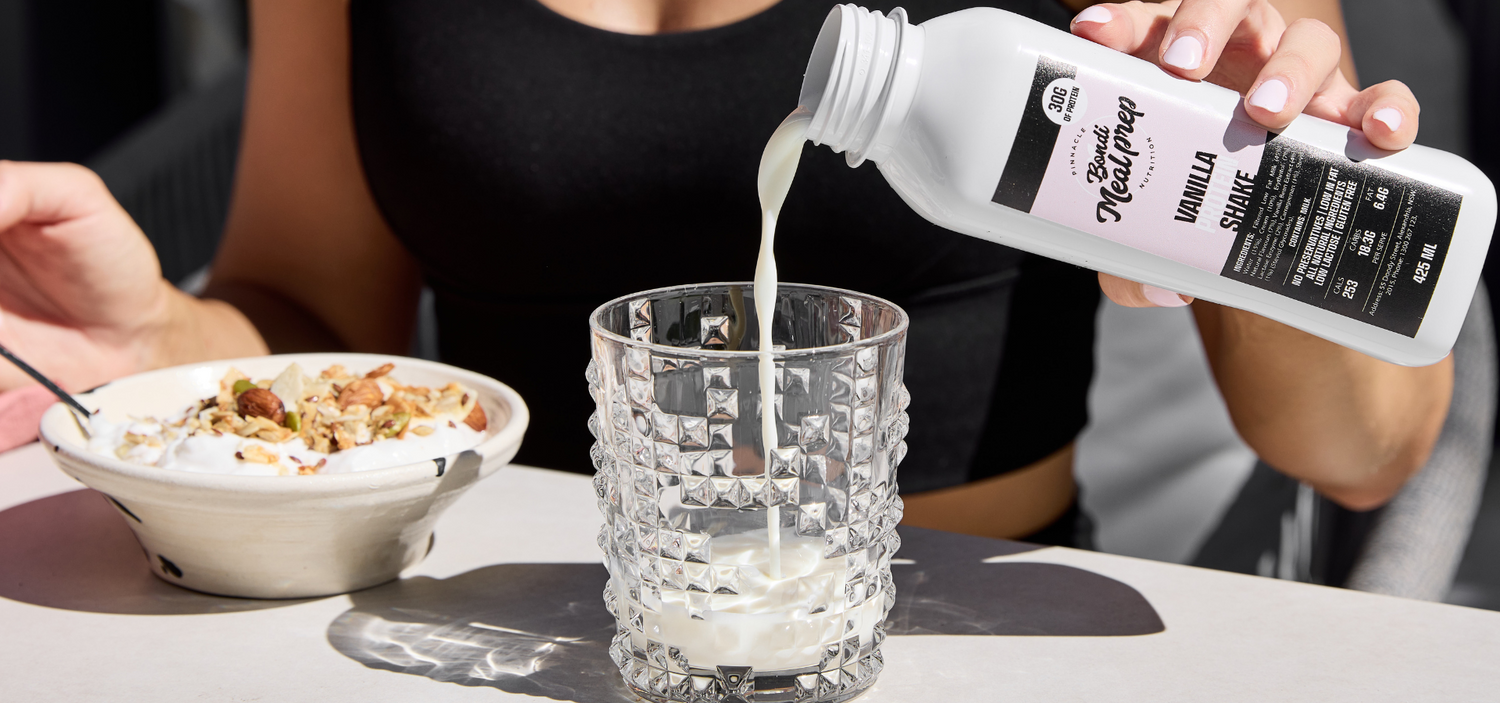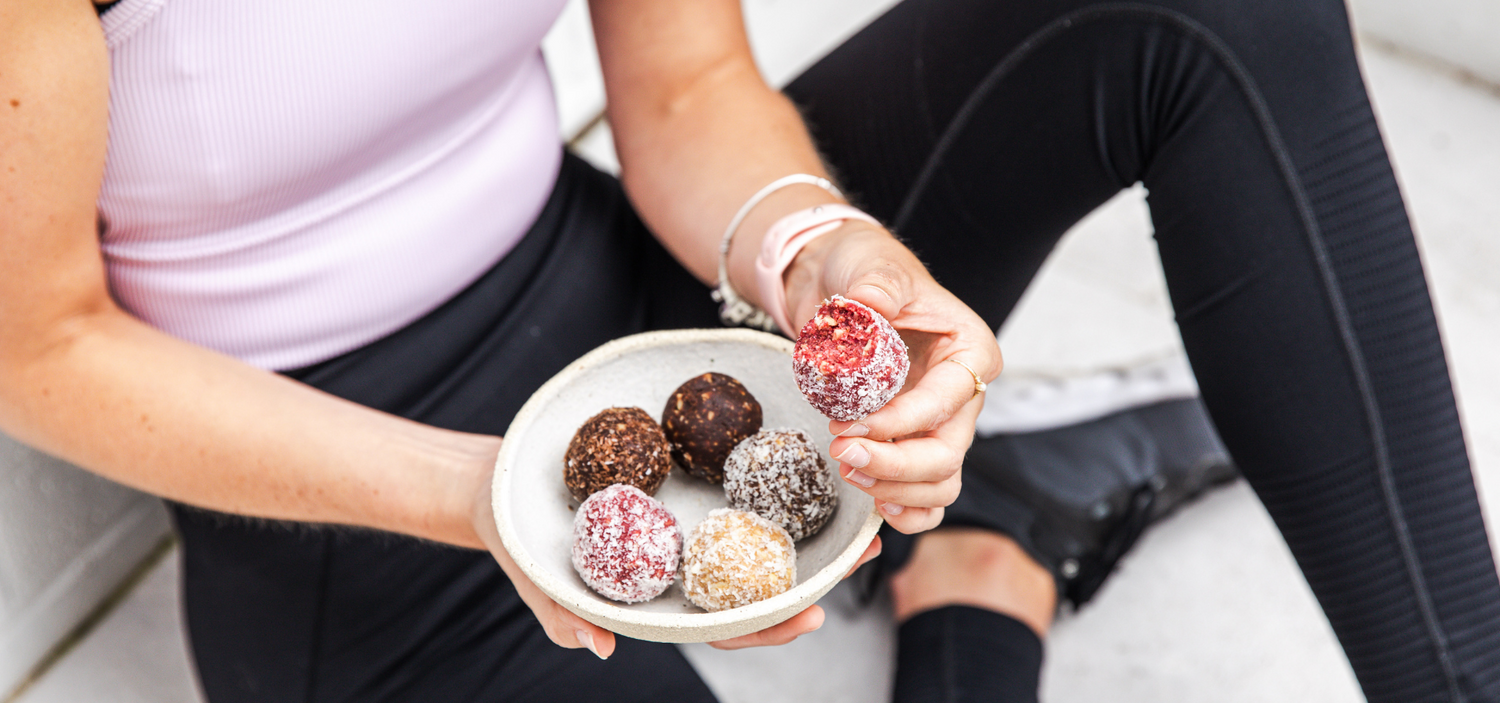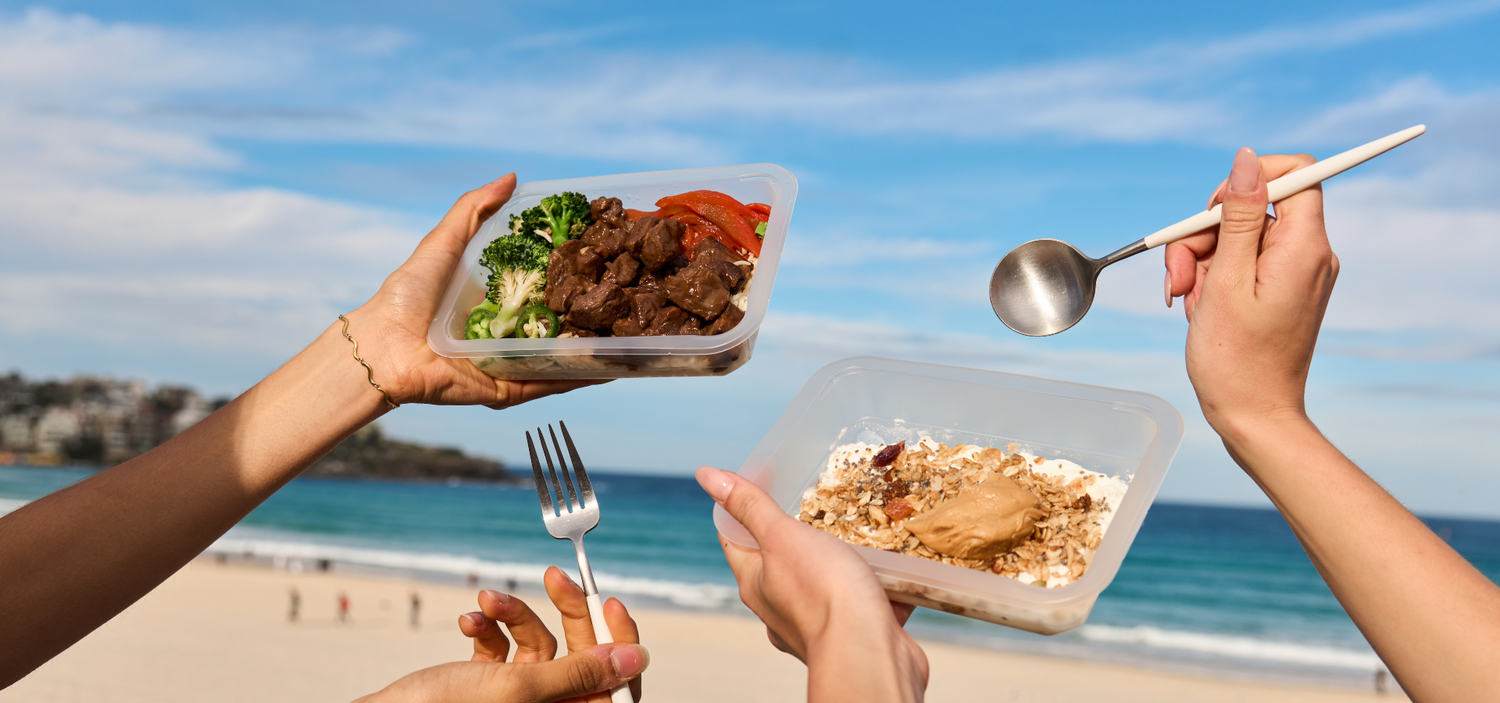Keto Vs. Intermittent Fasting: What Works Better?
Keto and intermittent fasting are two of the most talked-about approaches to weight management, but they work in different ways. One diet focuses on what you eat, the other on when you eat. Both of these diets can help you lose weight, balance blood sugar, and boost your energy, but picking the right one depends on your lifestyle, eating habits, and what it is you’re aiming to achieve health-wise. This guide breaks down the key differences between keto and intermittent fasting, explains how each diet functions, and gives you practical insights to help you choose the approach that fits your real life. Key Takeaways Keto and intermittent fasting both support weight loss, but they work through different metabolic pathways. The ketogenic diet focuses on low carbohydrates and high fat to push your body into fat-burning mode. Intermittent fasting determines when you eat, using controlled fasting periods to influence metabolism and energy levels. Each has distinct pros, cons and challenges in day-to-day life. Bondi Meal Prep meals offer keto-friendly and nutrient-dense options to make both diets easier to sustain and more successful. Overcoming the Confusion Around Diets If you’re consulting this guide, you’ve probably encountered a flood of articles claiming one “perfect” diet to help you shed pounds or turbo-charge energy. Maybe you’ve tried one before and found the results tricky to maintain. Or maybe a friend swears by keto while your gym buddy preaches about fasting. Both keto and intermittent fasting have their passionate followers, and both can have transformative health benefits. But they aren’t interchangeable. Picking the right diet for you is about more than just nutritional theory. It’s about finding what works in your daily life. That’s why we’ve built this guide not just on science, but on real experiences from real people. You’ll learn how these diets work, what the day-to-day reality feels like, and where the biggest challenges actually arise. By the end, you’ll have a clear understanding of the differences between the two diets, what to expect every day, and how to choose the approach that complements your lifestyle. What Is the Keto Diet? The ketogenic diet, known as keto, is a high-fat, moderate-protein protein and low-carbohydrate diet designed to push your body into a metabolic state called ketosis. The ketogenic diet was originally developed to treat epilepsy, but is now widely used for effective weight loss and improving metabolic health. In a ketogenic state, your body burns fat instead of carbs for energy, producing molecules called ketone bodies, which are used as an alternative fuel source. A typical keto plate looks something like this: 70% fat from sources like olive oil, coconut oil, avocado, nuts or animal fats 20% protein from meat, eggs, dairy and seafood 10% carbohydrates from low-carb vegetables like spinach, zucchini or cauliflower By keeping carb intake extremely low, the keto diet reduces blood sugar spikes and forces the body to rely on stored fat. Many people report more stable energy levels once their metabolism adapts. Of course, that transition sometimes leads to the infamous “keto flu”. This entails a few days of fatigue and flu-like symptoms as your body makes the shift. Thankfully, keto flu is normally short-lived. Think of it as a brief layover on the way to your destination of a healthier you. What Is Intermittent Fasting? Intermittent fasting isn’t about what you eat but when. It involves eating within specific time windows and fasting outside those windows. This can help regulate blood sugar, reduce overall calorie intake and support healthy weight loss. Common intermittent fasting diets include: 16:8 time-restricted eating – 16 hours of fasting and an 8-hour eating window. Alternate day fasting – fasting every other day, or severely limiting calories on those days. 5:2 fasting – five days of normal eating and two days of low-calorie intake each week. Time-restricted feeding is a common variation that involves skipping meals, such as passing on breakfast, to extend the fasting period. When you fast, your body uses stored fat for energy. Research suggests this can improve insulin resistance and metabolic health. For many people, intermittent fasting fits naturally into their schedule. After all, missing breakfast because they overslept is suddenly not a bad habit but a “fasting window”. Keto and Intermittent Fasting: Differences at a Glance Both of these popular diets can support weight loss and better blood sugar control, but they do so through different mechanisms. Here’s how they compare: Keto Diet Intermittent Fasting Core Principle Low-carb, high-fat diet designed to induce ketosis Scheduled fasting periods with controlled eating Macronutrients High fat, moderate protein, very low carbohydrates No strict macronutrient rules Focus What you eat When you eat Typical Goals Fat burning, blood sugar regulation, sustained energy Weight loss, improved metabolic health Flexibility More restrictive in food choices More flexible in food types, stricter on timing Real-Life Challenges Meal prep, social situations, keto flu Managing hunger during fasting windows What Your Plate Looks Like Day-to-Day On a ketogenic diet, your plate is built around high-fat, low-carbohydrate ingredients. Think salmon with cauliflower mash, leafy greens sautéed in olive oil, and a handful of nuts for extra fat. Portioning matters, but the focus is on maintaining your carb limit. Unlike a typical carb diet, the aim is to rely on fat for energy instead of glucose. Intermittent fasting allows for more dietary flexibility, but meal timing is where the rubber meets the road. Within your eating window, the emphasis should be on nutrient-dense meals that fuel your body. A typical day might include eggs, avocado and brown rice at noon, grilled chicken, sweet potato and greens in the evening, and nothing at all after. In either case, meal prep is a major factor to consider. Keto often means planning your macros carefully, while intermittent fasting means making sure the meals you do eat are nutrient-dense and equate to a balanced diet. This is where Bondi Meal Prep can make your daily routine easier, taking the guesswork and hard labour out of your meal plans, so you can stay consistent without standing over a steaming stove at 10 pm. Weight Loss, Energy, and Health Benefits When it comes to weight management, energy levels and health effects, some significant differences separate the ketogenic diet and intermittent fasting. The keto diet works by triggering ketosis, a metabolic process where the body breaks down fat for fuel instead of carbohydrates. This can lead to reduced fat mass, more stable blood sugar levels, and fewer energy crashes throughout the day. Some people also notice better appetite control, which can make it easier to maintain a healthy weight without feeling constantly hungry. Intermittent fasting, on the other hand, promotes weight loss through calorie restriction and improved insulin sensitivity. By limiting the number of hours you eat, it can help regulate appetite hormones, support more consistent energy levels, and encourage the body to use stored fat as a fuel source. Many people also report improved digestion when they stop constantly snacking. Both methods have been linked to better cardiovascular health, lower blood pressure, and reduced risk factors associated with developing cardiovascular disease and heart disease. However, the benefits you experience will depend on your body, your lifestyle, and how consistently you follow your new diet. It’s also important to understand that results may take time. A diet isn’t about quick wins or short-term gains. It’s about finding a healthy way of eating that supports your well-being and feels maintainable in the long term. Meal Prep Realities All diet plans sound great on paper, but everyday life is where reality kicks in. Keto meal prep involves sourcing quality fats and proteins, planning macros and preparing snacks ahead of time. For busy people, that can be a bit of a hurdle. Also, the emphasis on whole, organic foods can make the cost of keto relatively high. Intermittent fasting simplifies when to eat, but when your eating window opens, it becomes crucial to choose nutrient-dense foods. A poor meal at the end of a fasting period can undo a whole day of good work. And, truth be told, most of us don’t make our best food decisions when we’re ravenous! Bondi Meal Prep helps make this easier by providing ready-made keto-friendly meals and nourishing options that are ideal for breaking a fast. That means no emergency pizza delivery or late-night potato chip binges because you didn’t get around to cooking. How People Actually Feel on These Diets When it comes to committing to a new diet, how you will feel matters most. Here’s what people commonly experience: On Keto:Many say they feel fewer energy crashes once they adapt to ketosis. The lack of sugar highs and lows can make their attention span steadier, although some find the restrictive food list challenging at social events. The first few weeks can also bring muscle cramps or fatigue while the body adjusts. “The first week or so was tough, but once my body adapted, my energy felt steadier than it had in years. I feel focused throughout the day, and I don’t get those afternoon slumps anymore.” – Richard On Intermittent Fasting:People often report a surprising level of mental clarity, especially in the mornings. Not preparing breakfast can feel liberating. But hunger can strike hard at the start, and it takes a little time for appetite patterns to settle. “I eat a decent meal after I train in the evenings. In the mornings, I just have coffee and water, then break my fast at lunchtime. At first, I felt a bit drained early in the day, but my body adjusted after a few weeks. Now I actually feel more energetic in the mornings, which is counterintuitive considering I haven’t eaten anything yet!” – Adam People tend to see their energy levels improve over time as their body composition changes and their routine stabilises. However, neither diet is automatically easy to acclimatise to. It’s crucial to give your body time to adapt and set realistic expectations. No one masters a new eating pattern overnight, even if Instagram influencers might make it look that way. Can You Combine Keto and Intermittent Fasting? Believe it or not, many people combine both diets. Keto and intermittent fasting can work well together because ketosis is often easier to maintain when eating windows are limited. A typical approach might involve following a low-carb, high-fat diet during a 16:8 fasting schedule. This can amplify fat burning and support stable blood sugar levels. However, this combo can feel doubly restrictive, especially early on when you’re adjusting. It requires lots of planning and patience. If you’re new to either diet, it may be smarter to master one before layering the two together. Which Approach Is Right for You? Sorry for the anticlimax, but there’s no single winner in the keto vs intermittent fasting debate. Both can be powerful ways to improve weight, blood sugar regulation, energy levels, and overall metabolic health. However, this will only happen if they fit into your real life, not just your best intentions. The keto diet might be the better choice if you prefer structure, clear macro goals, and steady energy throughout the day. The intermittent fasting approach could suit you more if you want flexibility in what you eat but can handle stricter timing around meals. Either way, the best plan is the one that works naturally with your lifestyle, not against it. Pay attention to your schedule, energy levels, and eating preferences. Whichever diet you pick, give your body time to adjust, stay consistent, and you’ll gradually find a rhythm that works for you. And don’t hesitate to make small tweaks as you go. It’s your diet and your life, so it’s only fair that you get to make the rules. Bondi Meal Prep: Real Food for Real Life Choosing a diet is one thing, but living it is another. That’s why Bondi Meal Prep is here: to provide real, chef-prepared food that makes it easier to turn healthy intentions into lasting results. If you’re following a ketogenic diet, our keto-friendly meals keep your macros on track without the stress or effort of daily meal prep. If you practice intermittent fasting, our nutrient-dense meals make breaking your fast nourishing and satisfying, with balanced, high-quality ingredients that keep you feeling your best. Whether you want more energy to train, more time with friends and family, or just a simpler way to stay consistent, Bondi Meal Prep helps make your new diet a lifestyle you can genuinely enjoy.
Read moreKeto Vs. Carnivore Diet: What's Better For The Long-Term?
The keto and carnivore diets are two trending ways to burn fat and lose weight. They seem similar, but differ significantly in nutrition, flexibility, and health effects. Here are the key takeaways you should know before choosing between these two low-carb diets: Keto is a low-carb, high-fat, moderate-protein diet that allows for a wide range of plant foods and animal products. Keto is more sustainable for weight loss and long-term overall health because it’s flexible and nutrient-rich. The carnivore diet is a strict zero-carb diet that focuses entirely on animal products. The carnivore diet can help in the short term as an elimination diet. Eating a carnivore diet can lead to nutrient deficiencies and digestive health issues, especially if followed for extended periods. Keto supports a balanced intake of protein, dietary fat, and plant foods, helping maintain energy levels, digestion, and better blood sugar regulation. Keto is more adaptable to real-life routines, making it easier to sustain over time. Bondi Meal Prep meals offer keto-friendly, nutrient-dense options to make the diet more successful. Keto vs Carnivore: Two Popular Diets, Two Very Different Journeys When it comes to low-carb diet trends, keto and carnivore are two of the hottest topics. If you’re researching these approaches, you're probably hoping to lose weight, increase your energy, and find a way of eating that supports your overall health. At first glance, these two diets can seem closely related. Both focus on reducing carbohydrates and increasing protein and dietary fat to help the body burn fat more efficiently. But that's where the similarities end. Beneath the surface, they can lead to very different outcomes for weight loss and your well-being. Committing to either diet is a significant lifestyle decision that demands careful consideration. This guide explains how each approach works, what it does to your body, and which one is most likely to help you reach your long-term health goals and feel your best. How the Keto Diet Works The keto diet works by shifting your body’s main fuel source from carbohydrates to fat. By lowering your daily carb intake to roughly 20 to 50 grams, your body begins producing ketones from stored and dietary fat. This state, called ketosis, can stabilise blood sugar, lower insulin levels, and create the conditions for steady fat loss. This is what the average person’s macro ratios look like when they’re following a keto diet: What makes the ketogenic diet appealing is its adaptability. It doesn’t require cutting out entire food groups or following a restrictive diet that’s tough to maintain. Instead, it allows for a balance of nutrient-dense plant foods, quality protein, and healthy fats that can be tailored to suit different goals and lifestyles. Why Keto Supports Sustainable Results A well-structured keto diet plan provides a balance between flexibility and results. Many people find it easier to maintain over time because it focuses on long-term habits, not short-term restrictions. Here are a few reasons why many people find keto more sustainable: Balanced nutrition: Keto includes plenty of nutrient-rich plant foods such as leafy greens, cruciferous vegetables, nuts, seeds, and berries. These provide fibre, antioxidants, and vitamins and minerals that support overall health. Protein first: Adequate protein intake helps preserve lean muscle mass during a calorie deficit. This is crucial for long-term fat loss and maintaining strength and energy levels. Flexible food choices: A keto meal plan can be adapted to different routines, activity levels, and social settings. That flexibility makes it easier to follow consistently, which is key to seeing real, lasting results. Keto works because it creates a clear structure without boxing you into a corner. You can eat real, satisfying foods that support your energy levels while still making steady progress toward your goals. How the Carnivore Diet Works The carnivore diet takes low-carb eating to its most extreme version. It involves eating only animal products such as meat, fish, seafood, eggs, and sometimes dairy products or bone broth. It’s a framework inspired by the notion that prehistorically, a human diet was based largely on hunting and consuming animals. All plant-based foods, such as fruits, vegetables, legumes, grains, and anything else derived from plants, are off the table with the carnivore diet. This creates a zero-carb approach where your body relies almost entirely on fat and protein for energy. For some, carnivore feels appealing because of its simplicity. There are no calorie calculations or portion measurements. You simply eat meat and other animal products and nothing else. While this clear structure can feel easy at first, it comes with real trade-offs that need careful consideration. Let’s explore them. Why the Carnivore Diet Is Risky Long Term Completely cutting out plant foods means removing a source of essential nutrients, which can have consequences over time. This lack of dietary balance raises several concerns: Nutrient gaps: A strict carnivore diet can lead to nutritional deficiencies in vitamin C, folate, potassium, magnesium, and fibre. Gut health concerns: Without fibre, the gut microbiome can weaken, increasing the risk of digestive disorders and inflammation. Heart health: A high saturated fat intake, particularly if combined with frequent processed foods, may increase the risk of heart disease. Lifestyle fit: Strict rules can make everyday life more difficult. Eating out, travelling, or sharing meals with friends and family often becomes complicated, which can lead to burnout or rebound eating. The carnivore diet can offer short-term simplicity, but over time, its lack of balance makes it difficult to sustain. Because of the potential for health issues, it may create more problems than it solves. When the Carnivore Diet Might Be Appropriate While the keto diet is generally a healthier choice for most people, there are specific situations where a short-term zero-carb or carnivore phase can play a role. This should always be structured carefully, ideally with professional guidance, and kept time-limited. Here are the main scenarios where the carnivore diet may have a practical purpose: Short-term elimination diet: Stripping your diet back to only animal products can help identify intolerances and ease symptoms related to digestion, inflammation, or autoimmune responses. Diagnostic tool under supervision: If underlying health conditions are involved, this approach should only be attempted with the support of a qualified healthcare professional. Simple structure for behaviour change: The limited food choices can help reduce impulsive snacking and reliance on processed foods, giving some people a sense of control. Transition phase: Carnivore can sometimes act as a reset before reintroducing plant foods and moving toward a more balanced low-carb lifestyle. Remember, the carnivore diet normally works best as a temporary measure, not a long-term strategy. It can help clarify what foods work for your body, but it lacks the nutritional balance needed to support your overall health for an extended period. Weight Loss Results: Keto vs Carnivore Both the keto and carnivore diets can lead to weight loss, but the pattern, quality, and sustainability of that weight loss look very different in practice. A diet plan’s real success is measured not just by how quickly the number on the scale drops, but by how easy it is to maintain when the reality of day-to-day life kicks in. Keto: For Fat Loss That Lasts Keto has become a go-to for sustainable fat loss because it creates steady progress without the feeling of constant restriction. It allows for variety and balance, which makes it a diet you can adopt permanently, rather than tolerate for a short while. Here’s why keto tends to deliver longer-lasting results: Lower insulin, higher fat use: Reducing carbs lowers insulin levels, which encourages the body to burn fat more efficiently for energy. Muscle-friendly: A high protein intake helps maintain lean muscle mass, which keeps your metabolism strong as you lose weight. Flexible structure: When it comes to a family gathering, travel, or a hectic work week, keto can adapt to your social life and schedule. This flexibility is key to avoiding “on-again, off-again” dieting cycles that lead to inconsistent results. Carnivore: Rapid Loss that's Hard to Maintain The carnivore diet often leads to rapid early weight loss, but keeping those results is where many people run into trouble. The lack of variety and strict structure can make it tricky to stay consistent. Here are some of the main challenges: Misleading early drops: Much of the initial weight loss is from water and glycogen depletion, not fat. Monotony risk: Eating the same animal foods every day can lead to boredom, making it easier to slip off your plan or over-consume energy-dense animal products. Rebound potential: Strict rules can backfire when life gets unpredictable, increasing the risk of weight gain once the routine is disrupted. Keto works with your lifestyle, while carnivore often works against it. That’s why keto tends to deliver more sustainable weight loss results. Not just in the first few weeks, but in the months and years that follow. When committing to a diet, it’s about seeking progress you can maintain, not just chasing quick wins that fade. Metabolic Health, Blood Sugar & Inflammation Losing weight is important, but it’s only one piece of a much larger picture. How well your body manages blood sugar, handles inflammation, and protects your heart matters just as much. A diet that promotes metabolic health will keep your energy steady, support your gut, and lower the risk of long-term health problems. Keto diet: A well-planned ketogenic diet can help keep blood sugar stable by lowering insulin levels and reducing big spikes and crashes. This can ease inflammation and support heart health over time. Because keto includes plant foods, it also provides fibre and antioxidants, which are important for healthy digestion, gut balance, and cholesterol control. Carnivore diet: A zero-carb diet like carnivore can lower blood sugar spikes at first, but cutting out plant foods removes fibre and other key nutrients. This can lead to less support for your gut, more inflammation over time, and less protection for your heart. At Bondi Meal Prep, we believe your overall health should always be the measure of dieting success. A good diet will support your body, not make things harder for it. Keto has an advantage in this category because it offers a variety of nutrients that keep your metabolism strong and steady for years to come. Keto vs. Carnivore Comparison Table: Key Features at a Glance This side-by-side comparison shows why keto aligns better with daily routines and long-term health. Carnivore’s simplicity is tempting at first, but it lacks the variety and nutrition most people need to lead a happy, healthy life. Area Keto Diet Carnivore Diet Variety Wide range of plant foods and proteins Only animal products Nutrient density Balanced vitamins and minerals, antioxidants, and fibre High risk of nutrient deficiencies, no fibre Weight loss Effective and maintainable Effective short-term, harder to sustain Blood sugar Better blood sugar stability long term Improves by cutting carbs, but lacks dietary diversity Gut and heart health Fibre and unsaturated fats support long-term markers High saturated fat and no fibre may raise risks for some people Social fit Adaptable at home, restaurants, and events Restrictive and repetitive Sustainability High, due to flexibility Low, due to narrow food choices Which Diet Is Right for You? Bondi Meal Prep’s comparison guides usually help readers find the approach that fits their lifestyle and goals. Often, there isn’t a single “winner.” But in the keto vs carnivore debate, the evidence points clearly in one direction. For most people, keto is the healthier and more sustainable choice. Carnivore eating may work as a short-term elimination diet, but keto’s balance of plant foods and animal products makes it easier to maintain. It supports steady weight loss, better metabolic health, and crucially, your overall well-being. Bondi Meal Prep: Making Keto Delicious, Easy & Effective Deciding to follow a diet shouldn’t make your life harder. Keto works best when it’s simple, balanced, and fits around your real routine. That’s exactly what Bondi Meal Prep's delivery service is designed to do, with: Balanced, macro-friendly meals to support steady fat loss without feeling restrictive. The ability to filter meals by protein and carb content so you can follow your plan with precision. A wide range of menu options to suit different taste buds and preferences. Fresh meals delivered straight to your door for ultimate convenience. Explore Bondi Meal Prep’s keto menu today and discover food that supports your goals, your health, and a simple keto lifestyle you'll love living.
Read moreKeto vs Low-Carb: Which Diet Wins for Weight Loss?
Explore the differences between keto and low-carb diets, and find out which is better for weight loss and long-term results.
Read moreHow Much Does Keto Cost? Burn Fat, Not Your Bank Balance!
Wondering how much keto costs? This guide breaks down grocery expenses, budgeting tips, and how meal delivery can save time and money.
Read moreKeto vs Calorie Deficit: Which Diet Actually Helps You Burn Fat Faster?
Discover the pros and cons of keto vs calorie deficit diets in this easy-to-follow guide comparing sustainability and results.
Read more7 Quick Keto Recipes: Easy Keto for Busy Australians
Quick, easy keto recipes for busy Australians by Bondi Meal Prep to help keep your low-carb lifestyle on track.
Read moreWhat to Eat On A Keto Diet For Beginners: A Practical Guide For Australians
Learn what to eat, what to avoid, and how to start strong with this beginner-friendly guide to the keto diet.
Read moreA 7-Day Keto Meal Plan: A No-Stress Guide to Kickstarting Ketosis
Start your keto journey with our stress-free 7-day meal plan! Get delicious recipes, expert tips, and kickstart ketosis for lasting weight loss results.
Read moreLow-Carb Vs Low-Calorie Diet: Expert Guide to Fat Loss Success
When it comes to weight loss, two of the most common strategies are cutting carbs and cutting calories. Both approaches have passionate supporters, and both can help people lose weight. But when it’s a battle of low-carb vs. low-calorie, which diet burns fat more effectively? This guide breaks down the science, benefits, and drawbacks of each approach. By the end, you’ll know how these diets differ, who they suit best, and which is more effective for reducing body fat and improving long-term health. Plus, you’ll discover how Bondi Meal Prep can make kickstarting either a diet a breeze, with ready-made, chef-prepared meals delivered to your door. What Is a Low-Carb Diet? A low-carb diet reduces carbohydrate intake, usually by limiting bread, pasta, rice, sugary foods, and starchy vegetables. The focus shifts toward protein, healthy fats, and non-starchy vegetables. Depending on how strict the plan is, a low-carbohydrate diet can range from 20 grams of carbs a day on very low-carbohydrate versions, to around 100–150 grams for more flexible approaches. Popular forms include the ketogenic diet, Atkins diet, and paleo diet. The stricter versions aim to induce ketosis, where the body switches from using glucose to burning fat as its primary energy source. Some of the biggest benefits of low-carb diets include: Reduced hunger and fewer cravings due to stable blood sugar Faster initial fat loss, often from both water weight and stored fat Improved body composition and better control over insulin levels However, low-carb diets can feel restrictive if you enjoy foods like whole grains, legumes, or high-carb fruits. Social eating can also be more challenging when you’re avoiding typical staples. What Is a Low-Calorie Diet? A low-calorie diet takes a different approach. Instead of focusing on carb intake, the goal is to simply reduce calorie intake across all food groups. By lowering your daily calorie intake below your energy expenditure, the body starts burning stored fat for fuel. This approach can include all food groups but often encourages swapping high-calorie foods for nutrient-dense options. For example, replacing processed foods and trans fats with lean proteins, non-starchy vegetables, and healthy fats like olive oil. The low-calorie approach is less about the balance of your macros and more about overall food intake. It can be flexible, but if done without planning, people may experience hunger, reduced energy, or difficulty sticking to the plan long term. Low Carb vs Low Calorie Diet: The Main Difference At the heart of this comparison, the difference is metabolic: A low-carb diet changes how the body fuels itself, often leading to ketosis and a greater reliance on fat burning. A low-calorie diet is about creating an energy deficit, with fat loss occurring as a result of lower overall intake compared to energy expenditure. Both approaches can promote weight loss, but the way they achieve it and the impact on hunger, energy, and long-term health are different. Which Diet Helps You Lose Weight Faster? Studies comparing the two diets have shown that both approaches can lead to weight loss. However, the pace at which this occurs can differ. Low-carb diets often deliver rapid results in the first few weeks due to reduced glycogen stores and water weight. Once that levels out, fat loss continues steadily. Low-calorie diets may show slower early results, but they remain consistent over time and are easier to personalise based on food preferences. In terms of pure speed, low-carb usually has an edge for short-term results. But over six months or more, there's not always a significant difference between the two for overall body fat reduction. Hunger and Satiety: How Full Will You Feel? Hunger is a successful diet's biggest enemy. No matter which diet you follow, you should always aim to feel full and energised. On a low-carb diet, high-fat foods and protein-rich meals often lead to reduced hunger. Many people naturally eat less without counting calories simply because they feel satisfied. On a low-calorie diet, fullness depends more on food quality. Meals built around lean proteins, fibre-rich non-starchy vegetables, and whole grains can help control appetite. But if the focus is only on cutting calories, hunger can creep back in. This is where the low-carb eaters often report a smoother experience. Stable blood sugar means fewer crashes and fewer cravings. Nutrient Density and Long-Term Health Both diets can be healthy when balanced, but each carries risks if poorly planned. Here are a few pitfalls to watch out for: Low-Carb Considerations Can lack whole grains and fibre if not managed well May lead to lower intake of certain vitamins and minerals Needs a focus on nutrient-dense vegetables and healthy fats to avoid issues Low-Calorie Considerations Flexible, but risks nutrient gaps if the focus is only on numbers It can be harder to sustain if energy intake is cut too low Whichever diet you choose, focus on whole, minimally processed foods. Try to fill your plate with lean proteins, healthy fats, and plenty of nutrient-dense vegetables. Health Markers Beyond Weight Weight loss isn’t the only measure of success. Other broader health factors matter too. These include: Blood pressure: Both diets have been shown to lower blood pressure in people with excess weight. Cholesterol levels: Low-carb diets can improve HDL (good cholesterol) but may raise LDL (bad cholesterol) in some people, depending on fat sources, so aim for healthy fats like olive oil, nuts, and avocado to support heart health. Blood sugar and insulin levels: A low-carb diet is especially good at keeping blood sugar steady and lowering risks linked to conditions like type 2 diabetes. Low-calorie diets can help too, but the benefits usually come from losing fat overall rather than cutting carbs specifically. Heart disease and cardiovascular risk: Both approaches can lower cardiovascular risk when done correctly, especially when refined grains, table sugar, and trans fats are replaced with nutrient-dense whole foods. Which Diet is Easier to Stick To? The easiest diet for you to follow in the long haul will depend on your eating habits and lifestyle. Low-carb works well for people who enjoy structure, want fast fat loss, and feel comfortable cutting back on starchy vegetables, bread, and sweets. Low-calorie diets suit those who prefer flexibility and want room to include different foods, from whole grains to high-carb fruits, as long as portions stay controlled. Some people respond well to the rules of a low-carb diet, while others prefer the freedom of a low-calorie diet. There's no right or wrong. Instead, the aim is to pick an option that gives you the best chance to succeed and stay consistent. Pros and Cons Snapshot Now that we've had a close look at these two popular diets, here's a simple snapshot to help you make a quick comparison: Low-Carb Diet ✅ Faster early fat loss and reduced hunger✅ Supports blood sugar control and body composition improvements✅ May improve energy and mental clarity❌ Can feel restrictive in social settings❌ Needs careful food planning to remain nutrient-dense Low-Calorie Diet ✅ Flexible and easy to personalise✅ Works with all food groups, including whole grains and legumes✅ Steady, reliable fat loss when maintained❌ Hunger may increase if caloric intake is too low❌ Risk of fatigue or lowered resting energy expenditure over time Which Diet Should You Choose? If speed is your priority and you want a clear path to fat burning, the low-carb diet often provides more immediate results. A very low-carbohydrate plan like the ketogenic diet will deliver results even quicker and may also help with appetite control. If sustainability is more important, a low-calorie diet might be your best match. It allows for more food preferences, fits into social situations, and provides steady results without drastic carb restrictions. Ultimately, the best diet for you is the one you can stick to while still feeling energised and nourished. And remember, there’s no harm in adjusting your approach along the way. Don’t be shy about experimenting with different diets until you find the balance that works best for you. Bondi Meal Prep Makes Both Diets Easy No matter your choice, Bondi Meal Prep takes the stress out of planning and cooking. Our chef-prepared meals are designed by nutrition experts and built around lean proteins, healthy fats, and nutrient-dense vegetables. Explore our Low-Calorie Collection and Low-Carb Collection for delicious, satisfying meals that support fat loss without compromising on the nutrients you need to feel your best. When done the right way, diets don't feel like a slog or a sacrifice. With Bondi Meal Prep's fresh, macro-balanced meals delivered to your door, reaching your goals has never been easier or tastier!
Read more10 Low-Carb Lunch Ideas That Are Fast, Filling, and Seriously Delicious
Eating on a low-carb diet isn’t always simple, especially when lunchtime rolls around and you’re not prepared. You’re busy, you’re hungry, and the most convenient options are usually crammed with carbs. That’s when having a list of practical, tasty lunch ideas can make low-carb living a little easier. This guide brings together 10 quick, delicious recipes that are perfect for workdays or when you need a filling lunch in a hurry. From fresh salads to warm bowls and wraps, these ideas will help you limit carbs without waving goodbye to flavour. And for the days when even simple prep feels too much, we’ll show you how Bondi Meal Prep’s chef-prepared meals can keep you full and focused without any unwanted fuss. What Is a Low-Carb Diet? A low-carb diet is an eating plan that limits foods high in carbohydrates, such as bread, pasta, rice, starchy vegetables, and sugary snacks. By reducing carbs, your body relies more on protein and fat for energy. Typical meals focus on lean proteins like chicken, turkey, fish, and eggs, combined with healthy fats such as avocado, nuts, seeds, and olive oil. Low-carb diets also emphasise non-starchy vegetables like spinach, broccoli, zucchini, and lettuce, which provide fibre and nutrients without adding many carbs. Carbs aren’t gone completely, but they’re replaced with healthier, more satisfying options. Foods to enjoy: Lean proteins such as chicken, turkey, tuna, and eggs, which support muscle maintenance and keep you fuller for longer Low-carb vegetables like zucchini, lettuce, spinach, broccoli, and tomatoes, which provide fibre, vitamins, and minerals with minimal carbs Cheese, nuts, and seeds, which add protein, calcium, and healthy fats in moderate portions Healthy fats such as olive oil and avocado, which help with satiety and support heart health Foods to avoid or limit: Refined carbs like white bread, pasta, pastries, and most white rice, which can cause blood sugar spikes and add empty calories Sweetened drinks, including soft drinks, fruit juices, and energy drinks that are high in added sugars Processed foods and packaged snacks, often made with refined grains, trans fats, and added sugar that work against a low-carb lifestyle By centring your meals around whole, nutrient-dense ingredients, you’ll improve energy levels, stay satisfied for longer, and make healthy eating a lot more enjoyable. The Benefits of Eating a Low-Carb Diet Low-carb eating isn’t just about skipping sandwiches and chips. Done right, a low-carb diet can tap into a whole range of health benefits that go far beyond the plate: Weight loss: Reducing carb intake lowers insulin levels and encourages the body to burn stored fat for energy. This can lead to steady fat loss, particularly around the abdominal area, when combined with a calorie-controlled plan. Stable blood sugar: Fewer carbs mean fewer spikes and dips in blood sugar, which helps keep energy levels consistent and can benefit people managing insulin resistance or type 2 diabetes. Reduced cravings: Meals higher in protein and healthy fats promote satiety, so you naturally feel fuller for longer and are less likely to reach for a sneaky snack between meals. Better heart health: When low-carb eating includes plenty of non-starchy vegetables, lean protein, and healthy fats, it may help improve cholesterol balance, lower triglycerides, and support healthy blood pressure. Plan to Succeed on a Low-Carb Diet One of the best diet recommendations is simple: plan your meals whenever possible. Success on a low-carb diet comes down to knowing what you’ll eat before hunger strikes. Without a plan, it’s far too easy to reach for high-carb convenience foods. When following a low-carb diet, it’s crucial to refuel with nutrient-dense meals. By having recipes and lunch ideas ready to go, you’ll always have something balanced and satisfying on hand. Preparing a big batch of vegetables, cooking up grilled chicken on Sunday, or keeping leftovers from dinner can all make lunch prep quicker. Ultimately, planning your low-carb meals will make your diet easier and more sustainable in the long run. 10 Low-Carb Lunch Ideas Lunchtime is often the hardest meal to manage. Unlike dinner, when you can spend a bit of time in the kitchen, lunch often happens at work or on the go. That’s why these low-carb lunch ideas are designed to be quick, portable, and above all, delicious. 1. Classic Chicken Salad Wraps Ingredients: Shredded chicken, diced avocado, red onion, lettuce slices, light dressing Prep: Mix the chicken, avocado, and onion with your favourite dressing. Pile into crisp lettuce wraps and enjoy. This chicken salad wrap is light but still a filling lunch packed with flavour. 2. Grilled Chicken and Greens Bowl Ingredients: Grilled chicken, mixed greens, tomatoes, olive oil, herbs Prep: Layer the greens and tomatoes, add slices of grilled chicken, and drizzle with olive oil and herbs. It’s simple, fresh, and has the best texture thanks to the mix of crunchy veggies and juicy chicken. 3. Cauliflower Rice Stir Fry Ingredients: Cauliflower rice, eggs, diced turkey, vegetables, soy sauce Prep: Stir fry the turkey and vegetables, add cauliflower rice, crack in the eggs, and toss with soy sauce. This is an easy lunch that's perfect for when you want a warm, hearty bowl fast. 4. Tuna and Avocado Salad Ingredients: Canned tuna, diced avocado, lemon juice, chopped lettuce Prep: Mix tuna with avocado and lemon juice. Serve on a bed of lettuce. This high-protein option is refreshing, filling, and comes together in minutes. 5. Zucchini Noodles with Prawns and Pesto Ingredients: Spiralised zucchini, red pesto sauce, cooked prawns, parmesan Prep: Toss zucchini noodles in pesto, top with shrimp, and sprinkle with parmesan. Low in carbs but big on flavour, this dish feels indulgent yet keeps you on track. 6. Turkey and Cheese Lettuce Wraps Ingredients: Slices of turkey, cheese, lettuce, mustard or mayo Prep: Layer turkey and cheese in lettuce leaves, roll tightly, and enjoy. It’s a fast, no-cooking option that makes for a satisfying lunch with just a few ingredients. 7. Spaghetti Squash Bowl with Chicken and Vegetables Ingredients: Roasted spaghetti squash, diced chicken, tomatoes, herbs, olive oil Prep: Roast the squash until tender, shred into strands, and top with chicken, tomatoes, and herbs. This hearty bowl is a great way to use leftovers from dinner and transform simple ingredients into a delicious dish. For simpler prep, you can find pre-made spaghetti squash in Harris Farms and many asian supermarkets. 8. Cheesy Bacon and Egg Muffins Ingredients: Eggs, diced bacon, shredded cheese, spinach Prep: Whisk eggs, add bacon, cheese, and spinach, then bake in a muffin tin until golden. These flourless muffins are packed with protein and perfect for meal prepping in a big batch ahead of the week. 9. Caprese Salad with a Low-Carb Twist Ingredients: Fresh mozzarella, sliced tomatoes, basil herbs, balsamic dressing Prep: Layer mozzarella, tomatoes, and basil, then drizzle with balsamic dressing. For more protein, add grilled chicken or turkey. It’s light, colourful, and makes a surprisingly filling lunch. 10. Chicken and Avocado Cauliflower Rice Bowl Ingredients: Chicken, cauliflower rice, diced avocado, chopped greens, light chilli sauce Prep: Cook the chicken, serve over cauliflower rice, add avocado and greens, then drizzle with chilli sauce. Packed with flavour and texture, this bowl is a perfect balance of protein, vegetables, and healthy fats. Low-Carb, Low Effort, with Bondi Meal Prep Even the most dedicated home cook has days when chopping, prepping, and portioning feels like too much. That’s when Bondi Meal Prep makes healthy eating a whole lot easier. Our chefs create macro-balanced meals that are ready to go whenever you are. Each dish is prepared with lean protein, vibrant greens, and mouth-watering flavour, giving you all the nutrition you need without the stress of planning or cooking. With our Low-Carb Collection, you’ll have satisfying meals delivered straight to your door, designed to keep you on track even on the busiest days. Think of it as the shortcut to your goals. Nutritionally balanced meals, zero effort, and lunchtime sorted in seconds. That’s how we do low-carb at Bondi Meal Prep.
Read more9 Low-Carb, High-Protein Recipes for Easy & Delicious Meal Prep
Simple and quick low-carb, high-protein recipes for busy Australians by Bondi Meal Prep, designed to make your diet easier to follow.
Read moreThe High-Protein, Low-Carb Diet: Eat Smarter & Feel Better
Starting a new diet is a big commitment and can feel like stepping into the unknown. It often means letting go of familiar habits, adopting new ones, and navigating a sea of conflicting nutrition advice. But with the right plan and mindset, switching to a high-protein, low-carb diet can be one of the most positive lifestyle changes you make. If your goal is to lose weight, build lean muscle, improve blood sugar, or simply feel better, this balanced approach to eating could be a game changer. It focuses on protein-rich, nutrient-dense foods while reducing refined carbs, helping you stay satisfied and energised. This guide will show you what to eat, what to skip, and how to make high-protein, low-carb eating work for your goals. Plus, you’ll discover how Bondi Meal Prep’s high-protein, low-carb collection can make it easy to kickstart your new diet, with nourishing, tasty meals always ready to go in your fridge. Understanding the High-Protein, Low-Carb Diet A high-protein, low-carb diet prioritises protein intake while reducing the amount of carbohydrates eaten each day. Unlike a low-fat diet or more extreme approaches like the ketogenic diet, this eating pattern is more moderate and flexible. It encourages balanced meals rich in protein and fibre, along with moderate amounts of healthy fats. Instead of eliminating entire food groups, the aim is: Increasing high-quality protein from lean meats, seafood, dairy, and plant-based protein sources Reducing refined carbohydrates and processed foods that can spike blood sugar and contribute to weight gain Including nutrient-dense foods like non-starchy vegetables, seeds, nuts, and healthy fats to support overall nutrition This eating pattern supports healthy weight loss, helps maintain muscle mass, and promotes better blood sugar control. Best of all, its flexibility makes it far easier to stick to than more restrictive or complicated diets. Health Benefits of a High-Protein, Low-Carb Diet High-protein, low-carb diets offer a wide range of health benefits, especially when it comes to weight management, blood sugar control, and metabolic health. By consuming more protein and fewer carbohydrates, many people experience improved body composition, better energy, and reduced cravings. Here’s what this approach can help you achieve: Reduced body fat: Protein supports satiety, meaning you’ll feel full longer and may eat fewer calories overall. This can help reduce excess weight and improve your body composition. Stable blood glucose levels: Lower carb intake helps reduce blood sugar spikes, supporting those with insulin resistance or seeking better diabetes management. Improved muscle mass and body composition: Protein helps maintain muscle during fat loss, so you lose fat, not muscle. Reduced cravings and more steady energy: Without the highs and crashes caused by simple carbs, you’re less likely to feel fatigued or snack between meals. Support for heart health: Including healthy fats like olive oil, chia seeds, and nuts in your diet can support cardiovascular function and reduce your risk of heart disease. It doesn’t matter if your goal is long-term health, managing your weight, or simply feeling more in control of your day-to-day energy; the benefits of a high-protein, low-carb diet are both practical and wide-reaching. Foods to Eat on a High-Protein, Low-Carb Diet When building your high-protein, low-carb meals, focus on whole, nutrient-dense foods that are rich in protein and low in carbohydrates. These foods not only support weight management but also provide key nutrients for optimal health. High-Protein Foods Chicken breast, turkey, and lean beef for high-quality animal-based protein Oily fish like salmon, tuna, and sardines for both protein and omega-3 fatty acids Free-range eggs for protein, healthy fats, and essential nutrients Greek yogurt, cottage cheese, and protein shakes for convenient protein-rich options Tofu, tempeh, and edamame for plant-based protein sources rich in fibre and nutrients Low-Carb Vegetables Leafy greens like spinach, kale, and rocket to boost fibre and micronutrient intake Cruciferous vegetables like broccoli, bok choy and cauliflower for fibre and antioxidants Low-carb staples like zucchini, asparagus, cucumber, capsicum, and green beans Healthy Fats Avocados for monounsaturated fats and fibre Extra virgin olive oil to support heart health and enhance flavour Chia seeds, flaxseeds, and pumpkin seeds for omega-3s and minerals Nuts like almonds, walnuts, and macadamias for satisfying, slow-digesting fats Drinks Water (still or sparkling) to support hydration and digestion Black coffee and herbal teas as low-carb, low-calorie beverage options Unsweetened electrolyte drinks to replenish minerals, especially when carb intake is reduced Focusing on these foods ensures you’re fueling your body with a healthy balance of protein and essential nutrients. Foods to Avoid Some foods work against your goals by raising blood glucose levels, increasing cravings, or contributing to excess calorie intake. While you don’t need to cut all carbs completely (and research suggests this might be an unhealthy approach), you should limit sources of refined and high-glycaemic carbs. High glycaemic is just a fancy way of saying that a food causes your blood sugar to rise quickly after eating. High glycaemic carbs can lead to energy crashes, cravings, and increased fat storage when consumed in excess. Foods you should avoid or reduce include: White bread, pasta, rice, and pastries that offer little nutritional value and raise blood sugar quickly Processed foods that are high in added sugars, preservatives, and saturated fat High-sugar fruits like bananas, mangoes, and grapes, which can spike blood sugar when eaten in excess Starchy vegetables like potatoes and sweet corn, which are higher in carbs and lower in fibre Soft drinks, energy drinks, fruit juice, and other sweetened beverages that add empty calories and disrupt blood glucose levels By reducing these foods, you’ll make more room for nutrient-rich, high-protein options that better support your goals. Smart Swaps for Everyday Meals You don’t need to reinvent your meals—you just need to swap smarter. With a few easy adjustments, you can continue enjoying your favourite dishes while sticking to your high-protein, low-carb diet. Try these simple and satisfying swaps: Zucchini noodles or shirataki noodles instead of spaghetti Cauliflower rice or broccoli rice instead of white or brown rice Almond flour or coconut flour instead of wheat flour in baking Stevia, erythritol, or monk fruit instead of table sugar Greek yogurt or coconut yogurt instead of sweetened dairy desserts These tweaks allow you to enjoy more protein and fewer carbs, without needing to say goodbye to all your old favourites. 3-Day High-Protein, Low-Carb Meal Plan Here’s a practical, easy-as-pie meal plan to help you eat more protein, stay full, and reduce your carb intake naturally. Each day balances high protein with healthy fats and low-carb vegetables. Day 1 Breakfast: Scrambled eggs with baby spinach and fresh tomato cooked in olive oilLunch: Bondi Meal Prep’s õra king salmon and steamed greensDinner: Pan-seared salmon with sautéed zucchini noodles, garlic, and basil pestoSnack: Greek yogurt topped with chia seeds and a few crushed walnuts Day 2 Breakfast: Protein smoothie made with almond milk, whey protein, peanut butter, and frozen berriesLunch: Turkey lettuce wraps filled with hummus, cucumber, and red capsicumDinner: Bondi Meal Prep’s grass-fed eye fillet steak and seasonal greens Snack: Cottage cheese with celery sticks and a small handful of almonds Day 3 Breakfast: Chia seed pudding made with coconut milk, cinnamon, and crushed walnutsLunch: Lean beef stir-fry with green beans and capsicum, cooked in olive oil and garlicDinner: Bondi Meal Prep’s free-range chicken breast and sweet potato cubesSnack: A handful of macadamias or sunflower seeds This sample plan is designed to keep carb intake low while providing enough protein and healthy fats to fuel your day and support lean muscle maintenance. For a more extensive meal plan, check out our 7-day high-protein, low-carb guide and 9 simple but delicious high-protein, low-carb recipes. 5 Tips to Make Your Diet Work Starting a new diet is easy, but sticking with it for the long haul is another story. Here are a few simple habits that will make your high-protein, low-carb diet sustainable: Prep meals in advance: Avoid reaching for convenient and processed foods when life gets busy. Batch cooking or having healthy ready meals in the fridge, like those delivered by Bondi Meal Prep, can help you stay on track when time gets tight. Track your daily protein intake: Make sure you’re consistently eating enough protein. This will ensure muscle maintenance and curb those dreaded hunger pangs. Stay well hydrated: This supports digestion and protein metabolism. Drinking plenty of water is especially important if you’re eating fewer carbs, which naturally hold water in the body. Ease into the lifestyle: Gradually reducing carbs, instead of cutting them all at once, will help your body adapt without the shock. Focus on consistency over perfection: It’s okay to have the occasional indulgence, as long as you’re making high-protein, low-carb choices most of the time. Make Healthy Eating a Way of Life with Bondi Meal Prep At Bondi Meal Prep, we believe healthy eating should be a way of life. That means your routines surrounding food need to be balanced, enjoyable, and as simple as possible. It’s not always easy to find the time to prepare a perfectly balanced meal that’s as good for your goals as it is for your tastebuds. Luckily, that’s where we come in. Our delicious high-protein, low-carb meals are: ✔️ Chef-prepared for irresistible flavour ✔️ Protein-packed and nutritionist-approved ✔️ Artificial flavour and preservative-free ✔️ Made fresh with premium Aussie ingredients ✔️ Delivered fresh to your door (never frozen) ✔️ Ready in minutes—no prep, no stress Build a box customised to your goals today and discover meals that help you stay consistent without compromising on taste, quality, or time. Fuel your body, simplify your week, and make eating well the easiest part of your day with Bondi Meal Prep!
Read more7-Day Low-Carb Meal Plan: Simple, Satisfying Meals to Fuel Your Week
Simplify your low-carb lifestyle with our easy 7-day meal plan! Enjoy delicious meals, smart tips, and fuel your body for your health goals.
Read moreThe Ultimate CrossFit Diet Guide (Maximise Your Performance)
CrossFit Diet Guide: Fuel Your High-Intensity Workouts If you’ve spent any time around CrossFitters, you’ll know it’s more than just a workout. It’s a way of life. Built around constantly varied functional movements performed at high intensity, CrossFit training challenges your strength, endurance, and grit. To keep up with that kind of demand, your body needs proper fuel. That’s where a well-balanced CrossFit diet comes in. The right food can power your workouts, support recovery, and help you push your performance to the next level. This guide is designed to be your go-to resource for CrossFit nutrition. We’ll break down why meal planning matters, how to build a CrossFit diet plan that works for you, and what foods best support your training. Whether you’re a beginner or a seasoned CrossFit athlete, getting your nutrition down pat can make all the difference. Ready to eat delicious, nutritious meals that work as hard as you do? Let’s dig into the details! What Is a CrossFit Diet? A CrossFit diet isn’t a cookie-cutter approach, but there are common themes: whole foods, lean proteins, healthy fats, and balanced carbs. Many CrossFit athletes follow specific diets, such as the Zone Diet or a Paleo diet, which are designed to support muscle growth, performance, and overall health. When eating for CrossFit, the aim is to maintain energy during intense workouts, improve body composition, and reduce inflammation. A solid CrossFit diet avoids processed foods and sugar-sweetened drinks, while prioritising vegetables, nuts and seeds, lean proteins, and low glycemic fruits like berries. If you’re wondering what low glycemic means, it refers to foods that raise your blood sugar slowly and steadily, rather than causing a quick spike and crash. This helps maintain energy during your training and keeps hunger at bay between meals. Why CrossFit Nutrition Matters CrossFit workouts are high intensity, and your body needs the right fuel to meet that demand. Proper CrossFit nutrition supports muscle recovery, reduces the risk of injury, and helps control blood sugar. It also ensures your immune system stays strong, even after the most intense training sessions when fatigue can make you more susceptible to illness. Without the right nutrients, CrossFit athletes can experience slower recovery and even muscle loss. That’s why protein, fat, carb, and micronutrient intake matter just as much as how many calories you burn in the gym. Macronutrients for CrossFit Success Macronutrients consist of carbohydrates, protein, and fat. These nutrients are the building blocks of your diet, providing the energy and raw materials your body needs to perform at its best, especially during demanding training sessions. Protein Intake: Building and Repairing Muscle Protein is the foundation of any CrossFit diet plan. It helps repair muscles after training and supports the growth of lean muscle mass. CrossFit athletes typically need 1.6 to 2.2 grams of protein per kilogram of body weight daily, depending on their training volume. Great sources of lean proteins include: Skinless chicken breast Lean beef Cottage cheese Eggs Protein powder (as a supplement, not a substitute for food) While "too much protein" is rarely a concern for active athletes, it’s crucial to ensure a decent intake of carbohydrates and fats. If you want to go hard and achieve results, balanced meals are your best training partner. Carbohydrates: Fuel for High-Intensity Effort Many people aiming to lose weight will restrict carbs, but it’s important to remember that they power your CrossFit workouts. Your body breaks down carbohydrates into glucose, which fuels training sessions. Carbs also support exercise recovery. After an intense CrossFit workout, it's generally recommended to consume about 1.0 to 1.2 grams of carbohydrates per kilogram of body weight within the first hour of finishing. This helps replenish the glycogen stores needed for your next session. Aim for complex, low glycemic index carbohydrates like: Sweet potatoes Quinoa Oats Brown rice Low glycemic fruits (berries, apples) Non-starchy vegetables (broccoli, spinach, green beans) Your carbohydrate intake should increase around intense workouts and taper during recovery days. Healthy Fats: Supporting Hormones and Recovery Believe it or not, but eating fat doesn’t always make you fat. If you’re following a rigorous CrossFit training regime, your body needs it. Healthy fats support hormone production, brain function, and recovery. Choose essential fatty acids and healthy monounsaturated fats over saturated fats and trans fats. CrossFit-friendly fat sources include: Avocados Olive oil Nuts and seeds Fatty fish (like salmon) Natural nut butters It’s best to keep your fat intake moderate but consistent, especially if you’re on a lower-carb nutrition plan. The Zone Diet and CrossFit The Zone Diet is a favourite for many CrossFit athletes, and for good reason. It’s built around a simple formula: 40% carbohydrates, 30% protein, and 30% fat. This macronutrient split is designed to help control blood sugar, reduce inflammation, and enhance both performance and recovery. What sets the Zone Diet apart is its focus on food quality and portion control. You’re encouraged to build meals with balance in mind. This means eating plenty of lean proteins, low glycemic carbs, and healthy fats. Sticking to the Zone Diet can help: Improve body composition Manage hunger and energy levels Support long-term health and performance goals Many CrossFitters love the structure it provides. It’s not about restriction; it’s about fuelling your body the right way. Following the Zone Diet can also help you avoid processed foods and become more aware of how certain foods affect your training and overall well-being. Sample CrossFit Diet Plan Here’s a simple meal planning template based on the Zone Diet: Breakfast 2 eggs scrambled with spinach 1 slice whole grain toast 1 tablespoon olive oil (cooked with eggs) 1/2 avocado Morning Snack Cottage cheese with mixed berries Small handful of almonds Lunch Grilled chicken breast Sweet potato Steamed broccoli Drizzle of olive oil On those hectic days when meal prep isn’t an option, Bondi Meal Prep’s Free-Range Chicken and Sweet Potato delivers a balanced, CrossFit-friendly lunch that keeps your energy up and training on track. Afternoon / Pre-Workout Snack Low-fat Greek yogurt 1 tablespoon chia seeds Banana Dinner Baked salmon Quinoa Roasted green beans Olive oil-based dressing If you get home late from a heavy session at the gym, the last thing you want is a heavy session in the kitchen. Having Bondi Meal Prep's Ora King Salmon and Brown Rice in the fridge means you can heat, eat, and rest (you’ve earned it!). Evening Snack (optional) Protein shake with almond milk (especially after late training sessions) This sample CrossFit diet plan supports muscle growth, sustains energy, and helps control blood sugar throughout the day. Foods to Embrace and Avoid Knowing which foods to prioritise, limit, or supplement can make a big difference in your performance and recovery as a CrossFitter. Here’s a simple guide to how to fuel up smart. Eat More Of To fuel performance and recovery, your diet should prioritise nutrient-dense, whole foods. Aim to include: Vegetables, nuts and seeds Lean proteins like chicken breast and lean beef Low glycemic fruits Whole foods and unprocessed foods Olive oil and healthy monounsaturated fats Avoid or Limit Certain foods can increase inflammation, slow recovery, and negatively affect your overall health. CrossFit athletes should aim to reduce: Sugar-sweetened drinks Processed foods Excess saturated fats High glycemic carbohydrates (e.g., white bread, sugary snacks) Supplements While whole foods should always come first, some supplements can support your CrossFit goals: Whey protein: A quick, convenient option post-workout to support muscle recovery. Fish oil: Rich in essential fatty acids, helps support joint and heart health. Vitamin D: Important for bone health, especially if you train mostly indoors. Magnesium: Can help reduce muscle cramps and improve sleep quality. Vitamin C: Can boost your immune system, which can become weakened during heavy training blocks. CrossFit Nutrition Timing When you eat matters just as much as what you eat. To maximise training sessions and recovery: Pre-workout: Focus on carbs and a little protein (e.g., banana and Greek yogurt). Post-workout: Prioritise lean protein and carbs for recovery (e.g., chicken breast and sweet potato). Spacing your meals evenly and staying hydrated will also improve your performance and help curb hunger between sessions. Avoid These Common CrossFit Nutrition Mistakes Even seasoned athletes can fall into poor nutrition habits. Here are some common pitfalls to avoid: Skipping meals: You can’t fuel high-intensity training on an empty tank. Overeating processed foods: These can disrupt your energy and recovery. Ignoring fat intake: Healthy fats are essential, so don’t skimp on olive oil, nuts, or avocados. Underestimating how much protein you need: Your muscle mass depends on consistent protein intake. Trying to lose weight too quickly: Focus on improving performance and body composition over crash diets. Meal Planning Tips for CrossFit Athletes Meal planning isn’t just for bodybuilders. It’s vital for anyone training hard and trying to eat well consistently. Here are a few simple meal planning tips and tricks to keep your nutrition on track: Cook in batches: Grill multiple chicken breasts or roast a tray of veggies for easy meals throughout the week. Add monounsaturated fats: Prep salads and sides with olive oil to make sure you're eating enough healthy fats. Track your macros: Download an app that makes it easy for you to monitor your intake of protein, fat, and carbohydrates. Keep it simple: Focus on whole foods, avoid processed foods, and stick to lean proteins, vegetables, nuts and seeds, and smart carbs. Stay hydrated: Water plays a vital role in recovery, digestion, and athletic performance. Aim for at least two litres per day. After intense workouts, consider adding electrolytes to replenish essential minerals like sodium, potassium, and magnesium lost through sweat. Level Up Your CrossFit Nutrition with Bondi Meal Prep You’ve got the commitment and the training plan, now all you need is the right fuel. At Bondi Meal Prep, we take the guesswork out of meal planning with chef-prepared, nutritionist-approved meals designed to support your CrossFit goals. All our meals are made in small batches for quality and taste, enabling you to: ✔️ Manage your macros without compromising on flavour ✔️ Stay energised throughout the day and during workouts ✔️ Nourish your body for muscle growth, recovery, and optimal performance ✔️ Spend more time training and less time shopping and chopping Explore our wide selection of pre-prepared meals and create a customised plan today and make healthy eating the simplest part of your CrossFit lifestyle.
Read moreZone Diet Guide
Support your CrossFit goals with this Zone Diet guide. Get practical advice on what to eat and when so you can train harder and recover faster.
Read moreWhat to Eat Before CrossFit for Peak Performance
Get practical advice on what to eat before CrossFit to fuel your next session. Get tips on balancing your macros and meal timing.
Read moreA Guide To Building The Ultimate Halal Meal Plan For Fitness
When you see a 7-day meal plan, it can feel like it was designed for someone else. Maybe it works well for a bodybuilder, a cardio fanatic, or someone focused on weight loss. But the truth is simple: no single meal plan works for everyone. Instead, the best halal meal plan is one that adapts to you. That's because your energy needs, your routine, and your aims are different from anyone else’s. Whether your priority is reducing body fat, increasing strength, or keeping up with an active lifestyle, the foundation stays the same, but the details change. This guide takes you through exactly how to make that happen. It gives you clear, practical nutrition frameworks for a range of lifestyles and health ambitions. It also shows how Bondi Meal Prep meals, which are made with halal-certified proteins, can make it easier to create a plan that is structured, halal-friendly, and 100% personalised. What Makes a Meal Halal? A halal diet is about more than avoiding pork or alcohol-based products. It reflects how food is sourced, prepared, and consumed. In the context of meal planning, this means: Halal-certified meats (chicken, beef, lamb) and fish from certified suppliers. No pork, ham, or alcohol-based ingredients in any recipe. Foods prepared in an environment free from cross-contamination of halal and non-halal produce. Respecting personal values alongside health goals. Halal eating is compatible with any nutritional strategy, from weight management to strength training. It simply sets clear boundaries on how ingredients are sourced and prepared. All Bondi Meal Prep proteins are sourced from halal-certified suppliers. While the meals are not certified as a whole, we’ll gladly provide documentation on request. Simply email us at hello@bondimealprep.com.au for more information. Why a Structured Halal Meal Plan Helps Without a clear plan, even the most disciplined eaters can struggle to maintain consistency. Skipping meals, eating whatever is closest, or relying on convenience foods can make it harder to reach your goals. A structured halal meal plan helps by helping you align your daily macro intake with your goals. It also makes nutrient balance more predictable and measurable. Most importantly, it reduces stress around what to eat and when to eat it. At its core, a good meal plan does not restrict your life. It makes it easier. Core Nutrition Principles Behind Any Plan Before choosing a specific plan, it helps to understand the basic components of a balanced halal diet: Protein supports muscle repair, satiety, and healthy body composition. Carbohydrates provide energy for daily activities and training. Fats support hormone health, nutrient absorption, and sustained energy. Fibre aids digestion and helps maintain steady blood sugar levels. Micronutrients from vegetables, fruit, grains, legumes, and meat support overall health. A flexible halal meal plan is built around these core components, and then the ratios are adjusted based on your individual goals and lifestyle demands. The Foundation: A 7-Day Halal Meal Plan Framework This 7-day framework can be adapted based on portion size and macronutrient ratios. It offers a strong starting point for anybody seeking a wholesome, halal-friendly diet. It combines options that can easily be prepared at home with a few Bondi Meal Prep meals for added convenience. Day Breakfast Lunch Dinner Snack (Optional) Monday Protein oats with cinnamon & berries Grilled tuna with herbed rice Free-range chicken thigh and greens Greek yoghurt with cashews Tuesday Scrambled eggs with tomato & feta Halal beef mince with quinoa Butter chicken with broccoli Hummus with veggie sticks Wednesday Smoothie with protein powder and banana Grilled chicken breast + sweet potato mash Grass–fed pinnacle rump steak and greens Roasted chickpeas Thursday Chia pudding with almonds Moroccan chicken bowl Halal beef stir-fry with brown rice Cottage cheese with berries Friday Avocado toast with eggs Free-range chicken breast wrap Teriyaki chicken with veggies Mixed nuts and seeds Saturday Omelette with spinach Halal lamb curry Grass-fed lamb and broccoli rice Dates with almond butter Sunday Yoghurt bowl with raspberries and seeds Chicken and lentil salad Spiced beef patties with side salad Protein shake This structure gives you a clear base, but it’s only the beginning. The way you adjust this plan will determine how well it supports your goals. Let’s take a closer look at some of the ways you can modify this plan so that it’s a tailor-made fit for your lifestyle. Eating for Weight Loss Experiencing weight loss on a halal diet comes down to creating a sustained energy deficit. Simply put, this involves burning more energy than you consume, without compromising your overall nutrition. For most people, this means: Reducing total calories while maintaining sufficient protein intake. Choosing lean halal proteins such as chicken breast, lean beef, or fish. Increasing vegetables and high-fibre ingredients to support fullness. Limiting added oils, sugars, and refined carbs. When calories drop, protein becomes even more important. It preserves lean muscle mass, supports recovery, and helps you feel fuller and less deprived. Sample Day for Weight Loss Breakfast: Oats and high-protein yogurt with berries (high satiety, moderate carbs). Lunch: Lemon chicken with herbed rice (controlled carbs, lean protein). Dinner: Grilled lamb skewers with salad (lower calorie, nutrient-dense). Snack: Greek yoghurt with pistachios (protein and healthy fats). Why it works: This structure maintains steady energy without excessive calories, uses lean proteins to protect muscle, and prioritises volume from vegetables and fibre to prevent hunger. Eating for an Active Lifestyle For those working long days, training regularly, or managing a busy schedule, food is about fuel and recovery. The goal is to have a sustained source of energy throughout the day. Carbohydrates become more important to support activity. Protein intake stays steady to support recovery and muscle maintenance. Healthy fats provide slower-burning energy and help stabilise energy levels. Hydration is crucial for performance and concentration. This approach is less about restriction and more about balance and energy management. Sample Day for an Active Lifestyle Breakfast: Scrambled eggs with tomato and feta (protein and fat for lasting energy). Lunch: Chicken shawarma bowl with rice (balanced macros). Dinner: Teriyaki chicken with sweet potato and veggies (moderate carbs, high protein). Snack: Mixed nuts or a protein shake (sustained energy). Why it works: Carbs are timed at even intervals throughout your day to give consistent energy. A high level of protein supports recovery, while fat provides 9 calories per gram, making it a concentrated energy source that can help you avoid crashes. Eating for Muscle Building To build muscle effectively, your body needs a calorie surplus and consistent strength training. Nutrition plays a crucial role in supporting growth and recovery. High protein intake stimulates and repairs muscle tissue. Moderate to higher carbohydrate intake supports training performance. Healthy fats keep hormones balanced. Frequent meals or larger portions help to meet energy demands. In most cases, protein timing is less critical than total daily intake, but eating regularly can help you meet higher calorie goals. Sample Day for Muscle Building Breakfast: Omelette with spinach and avocado toast (extra calories and protein). Lunch: Lamb kofta bowl with tahini dressing (protein and nutrient-dense fats). Dinner: Grilled chicken thigh with rice and veggies (balanced macros). Snack: Dates with almond butter or a shake (carbs and protein). Why it works: Meals are structured to create a calorie surplus with controlled nutrient quality. Naturally, a high intake of protein is prioritised to support muscle repair and growth. The Science Behind the Adjustments At a glance, here is a comparison table outlining the main macro adjustments that each of these three approaches to meal planning involves: Goal Protein Carbohydrates Fats Key Strategy Weight Loss High: 120-160g daily (to maintain muscle) Moderate to low: 100-180g daily Moderate: 45-70g daily To create calorie deficit while still feeling full Active Lifestyle Moderate to high: 100-160g daily Moderate to high: 180-280g daily Moderate: 50-80g daily To maintain balanced energy for consistent output Muscle Building High: 160-200g daily Higher: 250-350g Moderate: 60-90g daily Large intake of calories and protein for recovery and muscle growth This table shows us that: Protein should stay high across all goals to support muscle repair, appetite control, and recovery. Carbohydrates adjust most depending on energy needs. Fats remain moderate to support hormone function and energy balance. These numbers are based on average body weights of 60–90 kg and can be fine-tuned using your personal stats and activity level. Following this basic framework of adjustments gives you control over your nutrition without the need for complicated tracking apps or rigid rules. If you make your meal planning simple, it’s much more likely that you’ll be able to stick to it long term. Bondi Meal Prep’s Macro Calculator: Personalise Your Plan While these meal plans are well-structured, your exact needs are unique. Your height, weight, activity level, and goals influence what and how much you should eat. That’s why Bondi Meal Prep’s macro calculator is a practical starting point for anybody seeking an added level of customisation. It gives you a personalised daily calorie and macronutrient target based on your personal characteristics. The filter on our meals page enables you to choose options that include specific amounts of calories, protein and carbs. If your aim is weight loss, maintenance, or muscle growth, the calculator and filter options make it easier to plan your daily meals with these goals in mind. Tips to Stay Consistent with Your Halal Meal Plan Consistency is what turns a meal plan into tangible results. The aim is to make good choices easy and repeatable, even on busy days. These simple habits will keep you moving in the right direction without unnecessary complications: Build meals around protein and vegetables firstStart with chicken, beef, lamb, fish, eggs, or legumes, then add colourful vegetables. This supports fullness, muscle repair, and steady energy, while also ensuring you get enough micronutrients for all-around health. Keep smart staples on handStock up on rice, oats, quinoa, wholemeal wraps, and canned lentils or chickpeas. These make it easy to adjust carbohydrates up or down based on training and activity. Use healthy fats in measured amountsAdd olive oil, avocado, nuts, or tahini for flavour and satiety. A small serve goes a long way and helps keep calories in check. Hydrate throughout the dayAim for steady water intake rather than big catch-up drinks at night. Proper hydration supports focus, training, and digestion throughout the day. Plan for imperfect daysIf you miss a meal or eat off-plan, adjust the next one rather than writing off the entire day. Remember, one decision does not define your diet. Lean on prepared options when life gets busyIf you want to stick to your plan, convenience is key. Keep a few of Bondi Meal Prep’s delicious meals in the fridge so you always have a halal-friendly, balanced choice ready to heat and eat. Small, repeatable actions create momentum. You should keep your plan simple, stick to it daily, and let the routine do the work. Halal by Bondi Meal Prep: Real Food for Real Results Good food should support your lifestyle, not complicate it. With Bondi Meal Prep, following a structured meal plan means more, not less. You enjoy more nutrients, more flavour, and more time back in your day. All our meals are prepared fresh by chefs, nutritionist-approved, and adaptable to your unique lifestyle. Paired with our macro calculator, they give you the ability to personalise your nutrition without the stress of endless cooking or tracking. Explore our Halal menu today and turn your goals into a personalised meal plan you’ll love to the last bite.
Read more7 Simple, Delicious & Nutritious Halal Recipes To Meal Prep
If you’re searching for halal recipes, you most likely want meals that do more than just tick the “halal” box. You’re looking for food that respects your faith, supports a healthy lifestyle, and still brings a bit of flavour and variety to the table. Maybe you’re tired of cooking the same dishes on repeat, or perhaps you’re trying to eat smarter without giving up the foods you love. If any of this sounds familiar, this recipe list is here to help. We’ve pulled together seven delicious halal-friendly meals that are not only packed with feel-good nutrients but also quick to prepare, making them perfect for everyday living. From energising breakfasts to satisfying dinners, these dishes prove that a halal diet can be low on stress and big on taste. And for those hectic moments when even the easiest recipe feels like too much, Bondi Meal Prep is here to help with nutritionist-approved meals made with halal-certified proteins. Chef-prepared in small batches, they combine effortless convenience with homemade quality and taste. Why Cook Halal at Home? Eating halal at home is about much more than just avoiding certain foods. It’s a way to bring fresh meat, fish, and vegetables together in meals that are wholesome and satisfying. Here are some of the reasons why so many Australians are home-prepping their halal meals: Stronger nutrition: Halal meat, such as chicken or beef, often comes from leaner cuts. This provides your body with more of the protein it needs for energy, recovery, and muscle tissue growth. Cleaner choices: Using whole halal foods with fewer additives makes it simpler to stay consistent with your health and lifestyle goals. Healthier flavour: Everyday staples like garlic, black pepper, and fresh herbs create a rich taste without relying on heavy sauces or extra sugar. Made for real life: Many halal recipes are easy to batch cook, store in the fridge or freezer, and reheat when you want a balanced meal with minimal time and effort. By creating your own halal dishes, you gain more control over the taste of what goes onto your plate and the quality of what goes into your body. If all this sounds good in theory but you're a little short on inspiration, here are 7 quick and easy halal recipes you can make with minimal fuss, using basic ingredients found at your local supermarket. Kickstart Your Morning with a Halal Breakfast Breakfast sets the tone for the entire day, so it's crucial to get off to a good start. A halal-friendly morning meal provides the energy to focus, prevents mid-morning snacking, and helps maintain your blood sugar levels. By combining protein, healthy fats, and plenty of flavour, these recipes will kickstart your morning and keep you fuelled until lunch. 1. Savoury Halal Omelette with Herbs Prep time: 10 minutes | Serves: 2 With 3 eggs in each serving, this dish provides plenty of protein and healthy fats, while chopped parsley adds a fresh and herby flavour. Ingredients: 6 eggs 3 tbsp milk 1 tbsp olive oil Salt and black pepper to season 2 tbsp fresh parsley, chopped 1 tsp garlic, minced Instructions: In a small bowl, whisk eggs with milk, salt, and pepper. Heat oil in a non-stick pan. Pour in the egg mixture, sprinkle with parsley and garlic. Stir gently, fold edges, and cook until set. Serve hot with a squeeze of lemon juice. Add a slice of wholegrain toast for a more filling dish. 2. Honey Pistachio Yoghurt Cups Prep time: 5 minutes | Serves: 2 When it comes to breakfast, many people like a light start to their day. This sweet option combines fresh yogurt, natural honey and crunchy pistachios, offering plenty of protein and natural fats without weighing you down. Ingredients: 2 cups Greek yoghurt 1 tbsp honey 2 tbsp chopped pistachios Instructions: In a bowl, combine yoghurt and honey. Sprinkle with pistachios. Chill and serve cold. For extra energy, add half a sliced banana. This simple breakfast can be prepped in advance and stored in the fridge for busy workday mornings when you need a morning meal in a hurry. Lean & Clean Halal Lunches Lunchtime is when your body needs a reliable source of fuel to push through the busiest part of the day. The right halal lunch will keep you energised, making it easier to stay productive at work or school. These recipes balance lean chicken, beef, grains, and fresh veg for quick meals that are packed with macronutrients and meal-prep friendly. 3. Grilled Chicken with Lemon Parsley Rice Prep time: 20 minutes | Serves: 2 This dish combines juicy grilled chicken, zesty fresh lemon, wholesome brown rice and fragrant herbs. It's the perfect mix of protein, healthy fats and fibre. Ingredients: 2 chicken thighs 1 tbsp olive oil 1 tbsp lemon juice Salt, garlic, and black pepper 1 cup cooked brown rice 2 tbsp chopped parsley Instructions: Mix lemon juice, olive oil, garlic, salt, and pepper for the marinade. Cover the chicken in the marinade and leave for 10 minutes. Grill until golden on both sides. Toss the rice with parsley and a drizzle of oil. Serve the chicken on top with extra lemon juice. Using chicken thighs rather than breasts ensures this dish offers a little extra natural fat, giving you the energy needed to power through your afternoon schedule. It’s a great low-calorie dish for anybody looking to eat halal and lose weight. 4. Spiced Ground Beef with Tomatoes Prep time: 15 minutes | Serves: 2 This is a quick and easy pan-cooked beef dish with chopped tomatoes and spices for a warm, rich flavour. Ingredients: 250g ground beef 1 can chopped tomatoes 1 tbsp oil 1 tsp minced garlic Salt, pepper, cumin Instructions: Heat the oil in a pan. Add ground meat, stir until browned. Add garlic, spices, and tomatoes. Simmer for 10 minutes, then serve with rice or salad. Simple & Satisfying Halal Dinners Dinner is about giving your body the nutrients it needs to recover after a long day. For many, it’s also the main family meal, giving everybody the chance to share food, relax, and enjoy the comfort of good food. A halal dinner should feel nutritious and satisfying, bringing together protein, vegetables, and carbs in balanced portions. These recipes do exactly that. 5. Garlic Herb Roast Chicken Prep time: 20 minutes | Cook time: 40 minutes | Serves: 4 A hearty, aromatic roast that brings comfort and a wide range of colourful ingredients to the table. Ingredients: 4 chicken pieces 2 tbsp olive oil 2 tsp minced garlic 1 tsp paprika 1 tsp dried oregano (or thyme) 4 carrots 4 parsnips 4 potatoes Salt and black pepper Fresh parsley, chopped, for garnish Instructions: Preheat oven to 180°C. In a small bowl, combine olive oil, garlic, paprika, oregano, salt, and black pepper into a smooth mixture. Brush generously over chicken pieces and leave to marinate. Peel and chop carrots and parsnips into coins. Peel and dice potatoes into cubes. Toss vegetables in olive oil. Roast chicken and vegetables until golden, turning sides once. Remove from oven and serve sprinkled with fresh parsley. 6. Creamy Garlic Butter Salmon Prep time: 10 minutes | Cook time: 15 minutes | Serves: 2 A simple weeknight dish with a velvety sauce, fresh aromatic herbs, and plenty of omega-3s. Ready in less than half an hour, this delicious meal is perfect for nights when you get home late from the office or gym. Ingredients: 2 salmon fillets 2 tbsp butter 2 tsp minced garlic ½ cup milk (or ¼ cup milk + ¼ cup cream for extra richness) 1 tsp chopped parsley (plus extra to garnish) Pinch of nutmeg or paprika (optional) Salt and black pepper Instructions: Melt butter in a pan over medium heat. Add garlic and cook until fragrant for about 1 minute. Lower the heat slightly, then whisk in milk (or milk + cream) and a pinch of nutmeg or paprika. Simmer gently for 2–3 minutes, whisking a little flour into the mix until slightly thickened. Season salmon fillets with salt and black pepper, then place in the pan. Cover and cook for 7–8 minutes, until tender and cooked through. Remove from heat, sprinkle with fresh parsley, and serve warm with greens or rice. A Sweet Halal Treat Dessert has always been a way to reward yourself or bring a good meal to a gentle close. With a halal twist, sweets can be lighter, nourishing, and still indulgent. By using ingredients like honey and nuts, you can enjoy a treat that complements your diet while still satisfying your sweet tooth. 7. Halal Honey Almond Cake Prep time: 20 minutes | Cook time: 25 minutes | Serves: 6 A soft, fragrant cake with a gentle nutty flavour from ground almonds. Ingredients: 1 cup flour ½ cup ground almonds (or finely chopped if you prefer texture) 2 tbsp butter, melted ½ cup milk 2 tbsp honey ½ tsp sugar Pinch of salt Instructions: Preheat oven to 170°C. In a bowl, mix flour, ground almonds, sugar, and salt. In another bowl, whisk milk, butter, and honey until smooth. Combine wet and dry ingredients to form a light batter. Spread evenly into a greased tin and bake until golden (about 25 minutes). Let cool completely before slicing. Serve with a drizzle of extra honey. Ready-Made Convenience, Home-Cooked Quality If you’re here, it’s because you care about what you eat. You want meals that are halal, healthy, and full of flavour, but also simple enough for real life. Maybe you’re cooking for your family or trying to make better choices without spending hours in the kitchen. Luckily, a halal diet doesn’t have to take up all your time. With fresh ingredients in the fridge and a few reliable recipes, you can fuel your day and keep everyone satisfied. And when life gets too busy to shop, chop and season, Bondi Meal Prep makes halal eating simple and stress-free. Our chef-prepared halal meals are made with halal-certified proteins, balanced nutrition, and the same love and care you’d put into a home-cooked dish. The only difference is they're ready to enjoy whenever you need them. With Bondi Meal Prep’s meals delivered fresh to your door, you can save time, stay on track, and feel good about every last bite.
Read moreKeto Vs Paleo Diet: A Complete Diet Comparison Guide
Keto and paleo are two diets that often get mentioned in the same breath, but they’re not as interchangeable as they seem. Each has its own rules, benefits, and challenges. Choosing the right diet for you will depend on your lifestyle and goals. This guide breaks down the most important differences so you can make an informed decision (and stick with it!). Key Takeaways Keto and paleo are two of the most popular diets today, and while they share some similarities, their rules and results are quite different. The paleo diet prioritises whole foods and cutting out grains, legumes, dairy, and processed foods to ensure food quality and balance. The keto diet is built around high fat, moderate protein, and very low carbohydrates to push your body into a fat-burning state called ketosis. Beyond nutritional science, both diets affect day-to-day life in terms of energy levels, cravings, social situations, and the time required to prep meals. Bondi Meal Prep makes both keto and paleo diets more achievable by offering meals that are nutritionally balanced and ready to eat in minutes. Overcoming the Confusion Around Diets If you’re reading this guide, chances are you’ve spent time sifting through more than a few articles about the best diet for weight loss, energy, or long-term health. Maybe you’ve tried a diet before, only to feel frustrated by the lack of variety or disappointed when the results didn’t last. Perhaps you’ve heard friends or family rave about the keto diet or the paleo diet. Both of these diets have millions of passionate supporters, mostly because they have the potential to deliver real results. But keto and paleo diets aren’t the same, and figuring out which one suits your lifestyle and goals isn’t always easy. That’s why Bondi Meal Prep’s experts have created this guide. We'll explain the differences between paleo and keto, highlight the pros and cons, and share the real-life experiences of people who have committed to a new way of eating. By the end, you won’t just know the biggest differences between the two diets. You’ll have the confidence to choose the one that’s right for you. And after we've introduced you to Bondi Meal Prep’s nutritionist-backed meals, you’ll know just how simple it can be to stay consistent, enjoy real flavour, and achieve results without the stress of planning and prepping every last bite. What is the Paleo Diet? The paleo diet, sometimes called the paleolithic, caveman, or stone age diet, takes its cues from the way our hunter–gatherer ancestors are thought to have eaten. The idea is simple: stick to whole, unprocessed foods and cut out modern additions like grains, legumes, dairy, and refined products. That means plenty of fresh vegetables, grass-fed meats, fish, nuts, seeds, and paleo-friendly staples such as sweet potatoes and leafy greens. It’s less about tracking exact macronutrient ratios and more about focusing on the quality of what makes its way onto your plate. People who follow paleo often say this “back to basics” style of eating helps them lose weight, feel healthier, and lower their risk of modern lifestyle diseases. By avoiding refined sugar, grains, and dairy, the diet is designed to calm inflammation, steady blood sugar, and support overall well-being. What is the Keto Diet? The ketogenic diet, or keto for short, is built around eating a lot of fat, a moderate amount of protein, and very few carbohydrates. The aim is to nudge your body into a state called ketosis, where it switches from burning carbs to burning fat stores for energy. A typical keto plate might break down like this: 70–75% fat from sources like olive oil, avocado oil, coconut oil, nuts, or animal fats 20–25% protein from meat, eggs, and seafood 5–10% carbohydrates, mostly from low-carb vegetables Because the diet keeps carbs so low, your body relies on fat for fuel. For many people, this means faster weight loss, steadier blood sugar, and better insulin sensitivity. Some followers also report feeling fewer afternoon energy crashes and greater mental focus once their body adjusts to burning fat instead of carbs. Paleo and Keto Diets: Key Differences at a Glance Both paleo and keto diets focus on eliminating processed foods and emphasising whole foods, but their goals and rules are different. Here’s a comparison table that makes it easy to see the key differences and similarities at a glance. It highlights the philosophy behind each diet, what you can and can’t eat, and the type of results you typically see. Aspect Paleo Diet Keto Diet Philosophy Mimics the food groups of paleolithic era hunter-gatherers Achieve ketosis by lowering carbohydrate intake Macronutrient Ratios Flexible, focus on food quality Strict, high fat, moderate protein, extremely low carbs Allowed Foods Whole foods, paleo-friendly foods, vegetables, lean meats, nuts, seeds, fruit, sweet potatoes High-fat foods like cheese, meat, eggs, oils, nuts, and low-carb vegetables Restricted Foods Grains, legumes, dairy, processed sugar, and refined sugar Grains, legumes, most fruits, starchy vegetables, and sugary foods and drinks Primary Goal Overall health and balance through food quality Fat loss and blood sugar control through carb restriction Flexibility More flexible and forgiving for social eating More restrictive but highly structured What Your Plate Looks Like Day to Day If you’re considering the paleo diet, expect to fill your plate with vegetables, high-quality proteins, and healthy fats from nuts and oils. For example, a typical dinner might be grilled salmon with roasted sweet potatoes and leafy greens. On the ketogenic diet, the same dinner might swap the sweet potatoes for creamy cauliflower mash cooked with olive oil or butter. The focus shifts toward hitting macronutrient ratios, particularly reducing carbs to an extremely low level (for a clearer understanding of what this looks like, check out our super simple 7-day keto meal plan). Although both diets share the goal of avoiding processed sugar and refined carbs, the everyday food choices that go into following each diet will look slightly different. Weight Loss, Blood Sugar, and Other Health Benefits Both diets can lead to weight loss, though the mechanisms differ. Paleo helps by cutting out refined sugar and processed foods, naturally lowering total calories and improving food quality. Keto achieves weight loss by forcing your body to burn stored fat as fuel. Research into the keto diet and paleo diet suggests both approaches may support better blood sugar control and improved insulin sensitivity, which is helpful for people at risk of diabetes. Supporters of the paleo and keto diets also report potential health benefits, like reduced blood pressure, lower risk of heart disease, and improved energy levels. It's important to understand that results will always vary from person to person. What matters most isn’t just the theory behind each diet, but how it fits into your daily life. The foods you enjoy, the eating habits you can stick with, and the daily routines you can realistically sustain will determine if paleo or keto is the better long-term choice for your overall health. The Realities of Meal Prepping on Paleo vs Keto This is the stage where theory turns into practice. All diet guidelines sound easy enough on paper. However, the real test is how much time and energy you can commit to meal planning and prepping each week. Paleo Diet Prep: Shopping often involves sourcing quality meats, lots of vegetables, nuts, seeds, and paleo-friendly foods. Luckily, most of these ingredients can be readily found in a decent-sized supermarket at reasonable prices. Prepping means chopping vegetables, roasting proteins, and often cooking from scratch. It’s healthy, but it can be time-consuming. Keto Diet Prep: Keto meal prepping requires not only finding quality proteins and vegetables, but also ensuring the right balance of fats. You may need to cook with coconut oil, avocado oil, or olive oil, and prepare high-fat snacks in advance. Carb restriction means you’ll spend extra time checking labels and tracking daily calories. The emphasis on quality ingredients can make the cost of keto a little higher than that of other diets. For someone with a busy lifestyle, both diets can feel like a big commitment. After a long day, it’s easy to skip the chopping board and reach for processed foods instead (step away from the microwave pie!). That’s when having a Bondi Meal Prep option tucked away in the fridge can help you stay on track. With our ready-made keto and paleo meals, you don’t have to worry about shopping, chopping, or counting macros. Our balanced, chef-prepared meals make it easy to stay focused in those moments when the temptation to slack creeps in. How Do People Actually Feel on These Diets? The most important aspect of any diet is how it feels in day-to-day life. Everyone’s journey looks a little different, but here’s a glimpse into what people experience when following paleo or keto diets. On Paleo: Many people say they feel lighter, less bloated, and more energetic after cutting out grains, dairy, and processed foods. The abundance of vegetables and whole foods helps them feel nourished, though the adjustment can take time. Eliminating food groups also means extra planning in the beginning, especially in social situations. “I'm a university lecturer. I switched to paleo because I was constantly dealing with energy slumps during afternoon teaching. It wasn’t a quick fix, and there was definitely a period of adjustment while my body got used to the new way of eating. I also found I had to put more effort into planning and preparing meals, which took up more time than I was used to. But now it feels second nature. My energy has stabilised, and I don’t get those crashes anymore. Because I know how good they'll make me feel, I actually enjoy putting my meals together.” – Matilda On Keto: Early weight loss and more stable blood sugar are common, along with fewer energy crashes during the day. Some people do experience the “keto flu” during the first week or two, and the high-fat focus can feel challenging to maintain long-term. Eating out can also be tricky when carbs are so restricted. “I switched to keto because I wanted to stay lean for MMA and have more stable energy. During the day, I often feel hungry (sometimes even a bit hangry!), but I’ve learned to channel that into work. It actually makes me more productive. The big difference for me is that I don’t get the afternoon slump I used to when I ate carbs. My energy feels steady, I can get through long workdays and tough training sessions without crashing, and I never feel bloated. Overall, my body responds really well to keto, as long as I can handle the cravings.” – Richard Your personal experience will depend on factors like how sensitive you are to carbohydrates, how much time you realistically have for meal prepping, and how comfortable you are with eliminating entire food groups. What can be learned from Matilda and Richard’s experiences is that it’s important to stick with a diet to enjoy long-term results. This might mean being patient and waiting for any initial teething problems to pass. That said, don’t be afraid to make adjustments to what you’re eating if things don’t feel right. Can You Combine Keto and Paleo? Some people wonder if it’s possible to blend the two diets rather than choosing one. In fact, you can. This hybrid approach is often called “keto paleo”, and it combines the high-fat, carb-restricted approach of keto with the whole-foods philosophy of paleo. In practice, it means cutting out grains, legumes, and dairy while also keeping carbohydrate intake low. The benefit is that you’re eating clean, nutrient-dense foods while still achieving a state of ketosis. The challenge is that it can feel quite restrictive, since you’re following the strictest parts of both diets at the same time. If you’re drawn to the structure of keto but also value the food quality of paleo, this combination might be worth exploring. However, keep in mind that it requires careful planning and a lot of dedication. If you've never tried either diet before, jumping on board with both at the same time might be overambitious. Which Diet is Right for You? When comparing keto and paleo diets, there’s no single winner. Each comes with potential health benefits and challenges, and the better choice depends on your personal goals and your willingness to adapt to a new way of eating. The paleo diet might suit you if you want to prioritise food quality, flexibility, and the enjoyment of fruits and vegetables, while also removing processed sugar and dairy. It offers more freedom in social settings and is often easier to maintain as a long-term lifestyle. The keto diet, on the other hand, might appeal if you’re motivated by structure, clear macronutrient ratios, and want to see faster weight loss results. It can be effective for stabilising blood sugar and supporting fat loss, but it requires discipline and can, for some people at least, feel restrictive in the long run. Both diets share important common ground. They cut out processed foods, emphasise whole foods, and encourage a healthier relationship with what you eat. Whichever path you choose, you’ll be making a positive step toward nourishing your body, supporting your health, and building a more mindful connection with what you put into your body each day. Bondi Meal Prep: More Nutrients on Your Plate, Less Stress in Your Day Ultimately, choosing between keto and paleo isn’t about chasing the latest diet trends. It’s about finding a sustainable way to eat that supports your health, lifestyle, and goals. If you’ve struggled with complicated shopping lists, long hours in the kitchen, or the temptation of processed foods, you’re not the only one. Sticking to either of these diets takes effort, but you don’t have to do it the hard way. Bondi Meal Prep's dedicated keto menu is chef-prepared with the right balance of healthy fats, proteins, and carbs. It keeps you out of the kitchen and your diet on track. Plus, every meal is made from whole, unrefined ingredients. Our delicious meals aren't just convenient, they're also a natural fit for a paleo lifestyle. With Bondi Meal Prep, you can enjoy the health benefits of these diets without the unwanted stress of planning, prepping, or cooking. That means more time for the things that matter in life and more energy to feel your best.
Read moreHalal Weight Loss Made Easier: Real Meals, Advice & Results
Halal weight loss made easy with balanced meal ideas, practical tips, and halal-friendly options from Bondi Meal Prep.
Read moreWhat is Halal? A Complete Guide to Halal Food & Dietary Rules (2025)
If you walk down the aisles of a supermarket or scroll through a food delivery app these days, you’ll notice something: halal food is everywhere. From shopping baskets to restaurant menus, halal-certified items are no longer a niche food choice but part of mainstream diets everywhere. Yet for many non-Muslim people, a lot of confusion still surrounds halal food. What is it exactly? How is halal meat different from other meat? And where does it fit into a healthy, balanced lifestyle? This guide explains in clear, simple terms what halal means under Islamic law and gives practical tips on how to make halal eating both convenient and nutritious. We’ll also explore how Bondi Meal Prep helps you enjoy certified halal proteins in delicious pre-prepared meals that are wholesome, nutritionally balanced, and ready to enjoy in just a few minutes. What Does Halal Mean? The Arabic word “halal” means “permissible”. Thus, halal refers to what Muslims are permitted to eat or drink under Islamic law. Any food and beverages that fall outside these rules are classified as “haram”, which means “forbidden”. The criteria for halal rules are taken from the Qur’an, which is the religious text Muslims follow, as well as centuries of interpretation by Islamic scholars. Haram foods and drinks that are specifically prohibited include: Pork and its by-products Blood Animals not prepared according to halal principles Alcohol Meat derived from certain carnivorous animals and birds of prey Foods that tend to be considered halal include: Fresh fruits, vegetables, and grains Seafood (with very few exceptions) Meat from animals that is properly processed according to Islamic principles Beyond this list, a wide range of everyday staples are also fine to eat and drink, as long as they are free from hidden haram ingredients (such as alcohol or gelatine from non-halal sources). What is Halal Meat? One of the most widely discussed parts of a halal diet is the meat. For meat to be considered halal, it must come from animals that are processed according to Islamic guidelines. This process, known as religious slaughter, involves following specific rituals while invoking the name of Allah. This process is important to Muslims because it shows spiritual observance and respects the animal’s welfare. Some Islamic scholars point out that the only difference between halal and non-halal meat lies in the preparation process. It’s important to understand that nutritionally, halal beef, lamb, and chicken provide the same protein, vitamins, and minerals as non-halal meat. However, for Muslims, adherence to the ritual is vital, as it makes the meat lawful to eat. To maintain halal integrity, halal cooking practices often require the separation of non-halal ingredients from halal ones. For example, chickens that are processed according to halal standards should not be cooked in the same kitchen space as pork. This prevents cross-contamination and preserves the meat’s halal status. Halal Certification Explained All this leads to an important question. With global food supply chains becoming increasingly complex, how can you be certain that the food on your plate is halal? Halal certification exists to give you that guarantee. Halal certification means: A halal food authority or a body like Halal Australia inspects and certifies that food products meet halal criteria Certification applies to every part of the food business, from abattoirs and butchers to the factories of packaged snack companies Consumers get peace of mind from knowing that their food is safe, ethical, and adheres to Islamic laws While some critics debate particular aspects of the food preparation processes, most halal food authorities now have clear and consistent regulations in place. What's the Difference Between Halal and Kosher Meat? It's also useful to understand how halal compares with other religious food requirements, particularly kosher food under Jewish law. Both halal and kosher rules involve the religious processing of animals. Additionally, they are both rooted in centuries-old religious traditions that emphasise spiritual observance during food preparation. However, there are also some clear distinctions. For example, the prayers recited are different, the types of permitted animal products vary, and the rules around mixing foods, such as meat and dairy, are unique to kosher but not part of halal. For Muslims, halal is guided by the Qur’an and the teachings of Islamic scholars, while kosher follows the Torah and rabbinical interpretation. Ultimately, these similarities and differences show how rules surrounding food in different faiths serve as a way of connecting daily life to spiritual values. Why Halal Matters Beyond Religion For many Muslims, eating halal involves honouring Islamic practices and remaining faithful to their beliefs. However, halal food is also gaining in popularity among people outside the faith. Many non-Muslims are drawn to its commitment to animal welfare, while others simply prefer the level of care that is put into halal food preparation. In today’s multicultural society, halal food has become a bridge. It brings together families, friends, and work colleagues from a wide variety of backgrounds, creating opportunities to share meals that everybody can enjoy. With growing demand in supermarkets, cafes and restaurants, halal is now recognised not only as a religious requirement but also as a lifestyle choice that’s widely embraced for its quality and inclusivity. Eating Healthy on Halal Following a healthy halal diet does not just mean avoiding haram foods like pork or alcohol. It’s also about making smart, nutritious choices. A healthy halal plate usually includes: Lean proteins, such as chicken, lamb, beef, or fish (prepared according to halal guidelines) Plenty of greens and other fresh vegetables for fibre and vitamins Whole grains for fibre and sustained energy Fresh fruits for natural sweetness and vitamins Alcohol-free drinks and halal-certified snacks to round out a balanced diet At Bondi Meal Prep, we make it simple to enjoy healthy, balanced meals with complete peace of mind. All of our proteins come from trusted suppliers and are halal certified, ensuring that the foundation of every meal meets halal standards. While the meals themselves are not certified as a whole by any government body, we are committed to transparency and are happy to share the certifications of our protein suppliers upon request. Just email hello@bondimealprep.com.au and we’ll provide all the details. Living Halal in a Modern World Remember, 'halal' is not just a word on a food label. It's a set of principles rooted in Islamic law that guide millions of people around the world in how they eat, shop, and live. From halal certification to the preparation methods used in commercial kitchens, halal provides clarity, structure, and a sense of connection for Muslims. It's also a way of eating that's gaining popular appeal among others who appreciate halal’s focus on quality and care. By combining halal with healthy eating habits, you can enjoy the best of both worlds. With mindful choices and fresh, whole ingredients, it's possible to follow a halal diet that is good for you – mind, body and spirit. Bondi Meal Prep: Halal Protein, Maximum Convenience Balancing family, work, and a healthy halal diet can feel like trying to pull off the impossible. That's why Bondi Meal Prep is here to make everything that little bit easier. Our chefs prepare fresh, flavourful meals using certified halal proteins. From hearty chicken dishes for after the gym to light, low-carb favourites, all our meals are designed to be tasty, balanced, and beautifully convenient. All you need to do is heat, eat, and enjoy. By choosing Bondi Meal Prep, you’ll always have a meal waiting in the fridge, made with halal proteins and packed with the nutrients your body deserves. Explore our halal menu today and see how easy it can be to enjoy healthy, delicious food that helps you take back some time for yourself.
Read more





